Programme Berlin 2024
Exposition temporaire
Haus der Kulturen der Welt
John-Foster-Dulles Allee 10, 10557 Berlin / Métro: lignes S5, S7, S9, S75, station: Hauptbahnhof
Entrée libre
Chaque jour, des ensembles thématiques sont déployés dans l'espace, présentés en boucle sur moniteurs dans l'Audifoyer et en projection dans l'Auditorium. Une exposition évolutive et temporaire où les thématiques alternent et questionnent les pratiques contemporaines de l'image en mouvement.
De 14h à 19h | Audifoyer
"Communauté singulière"
Fette Sans : La Reprise (dérive) [extrait] - Vidéo expérimentale | mp4 | noir et blanc | 15:0 | France, Allemagne | 2022
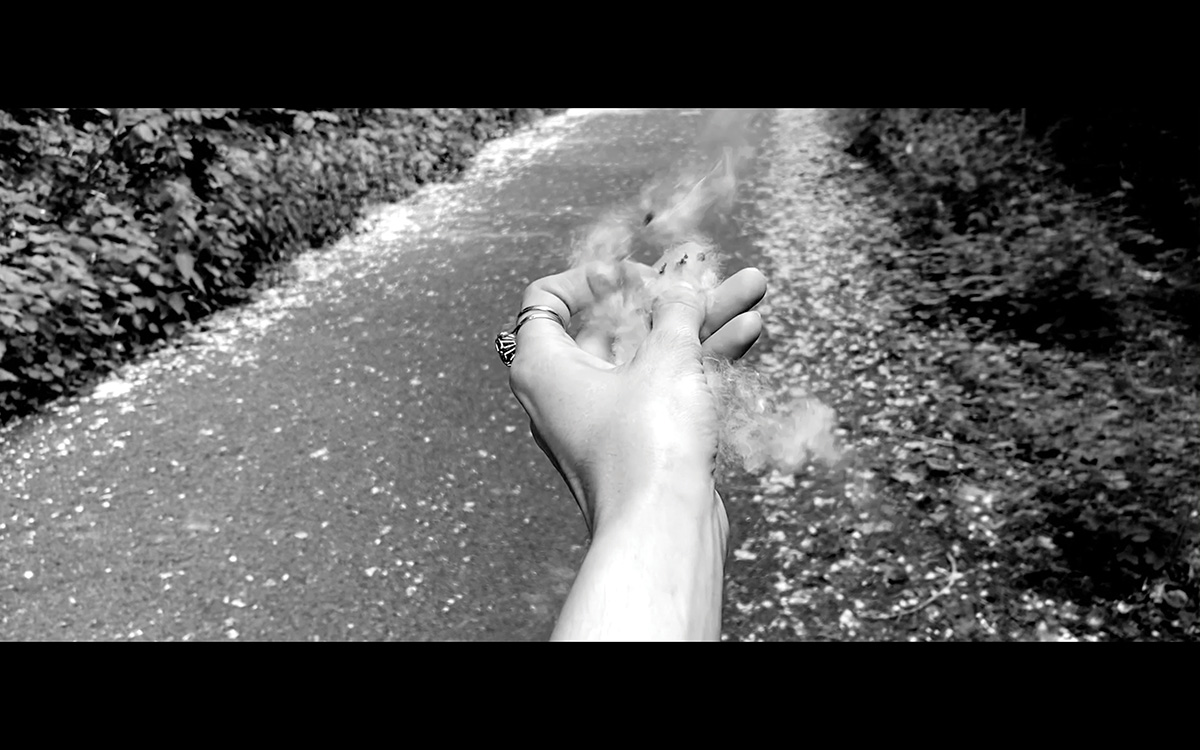
Fette Sans
La Reprise (Dérive) [extrait]
Vidéo expérimentale | mp4 | noir et blanc | 15:0 | France, Allemagne | 2022
La Reprise (Dérive) is an exercise in continuity and distortion. This experimental film began on June 20, 2020. As of September 3, 2023, it is 168 min / weeks long. Every week, a subsequent minute is produced by combining scenes shot that week with archival material from the past years. Footage and sound are consistently recorded with the same single device (an iPhone). The film may distort, but there is always a presumption that something exists, or did exist, which is what was recorded. The sequences are neither true nor false, they integrate various degrees of theatricality and authenticity. They become portraits of an agitated immersion in the perpetual process of being, of this unpredictable yet systematic gathering and indexing. They are the record of close observations. I am a passenger, a witness to recurrences and patterns. This continuous collage of archives is the tension. The narrative is disconnected from the sum of its parts and elaborates on successes and failures. In this regard, the film is in a constant state of being finished, rather than interminably in progress. While its length progressively evolves, it also always is its final duration. This work is meant to continue until my death.
Fette Sans is based in Zagreb and in Berlin. She has a conceptual and interdisciplinary practice that includes the production of images, writing, performances, online gestures, film-making, discussions, and installations. Games of dissociative identities and the stories we tell ourselves to collect evidence of what has happened are recurring components in her work. She is interested in the ambiguity of what constitutes an image’s residue. Concerned with social systems, representation, and technology, she develops obsessive rituals, collaborations, and speculative narratives to question these issues. Rituals are interesting because there are ways of expressing repetition and the longing for security while accepting the risks associated with the very act of ceremonial reiterations: boredom itself.
Magnus Lysbakken : Se! - Doc. expérimental | 4k | couleur | 28:0 | Norvège | 2023
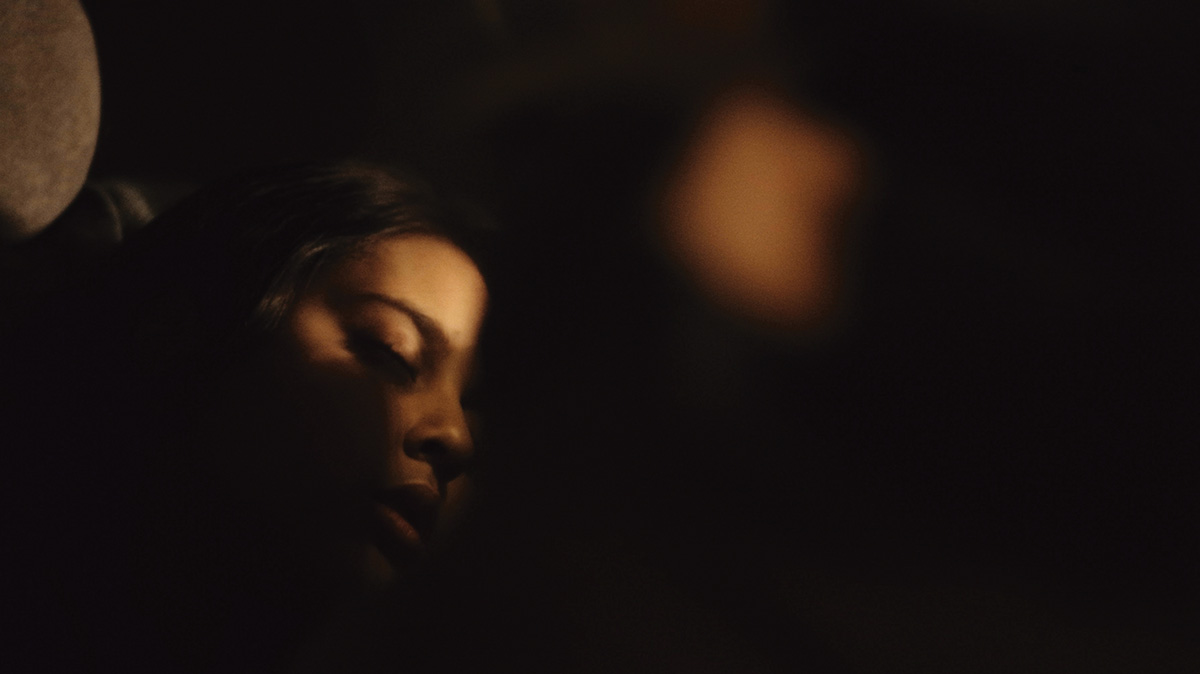
Magnus Lysbakken
Se!
Doc. expérimental | 4k | couleur | 28:0 | Norvège | 2023
A film about snow outside the window, tractors in convoys, children learning and breathing.
Magnus B. B. Lysbakken is a writer, director and cinematographer, working in the intersection between fiction, documentary. He started his career in the Danish film industry, where he made his screenwriting debut with the feature film «Lovers» in 2017, directed by Niels Kaa. In 2022 he graduated from the Norwegian Film School with a master’s degree in Directing Fiction, specializing in combining film production with social outreach. He also holds a BA in Film Science and a BA in Comparative Literature from the University of Copenhagen. Magnus’ films explore the social dynamics of small communities, with a special emphasis on the interactions between children and adults.
Pierre LefranÇois Verove : La Chambre De Paul - Fiction | 16mm | couleur | 15:20 | France | 2022

Pierre LefranÇois Verove
La chambre de Paul
Fiction | 16mm | couleur | 15:20 | France | 2022
Des hommes et des femmes crient puis s’attroupent, s’agitent puis s’enlacent. Paul leur dit adieu. Il quitte l’institution avec l’espoir peut-être d’un nouveau départ, mais au dehors, d’une chambre à l’autre, partout le passé persiste.
Pierre Lefrançois Vérove est né en 1989 et vit à Montreuil. Il a étudié aux beaux-arts de Paris-Cergy avant d’intégrer le Fresnoy, studio national des arts contemporains en 2021. Ses travaux, films et textes s’attachent aux marges visibles ou invisibles et à celles et ceux qui les peuplent. Une considération qui l’a mené à entrer dans le champ de la psychothérapie institutionnelle (La chambre de Paul, 2022) ou encore à tirer le fil des frontières européennes entre Paris et l’île de Lesbos en Grèce (Algèbre, 2019).
Lin Htet Aung : Seeking Wombs For Rebirths - Fiction expérimentale | mov | noir et blanc | 24:44 | Myanmar | 2021

Lin Htet Aung
Seeking Wombs For Rebirths
Fiction expérimentale | mov | noir et blanc | 24:44 | Myanmar | 2021
A boy went to a town. He went to find his next life.
Lin Htet Aung is a 98 born self-learned filmmaker and time based media artist based in Myanmar. In his earlier days, he wrote avant-garde poems and published underground poetry books. He started making short films in 2017. In 2020, his experimental short film “Estate” won “Silver Screen Award – Best Director” in Southeast Asian Short Film Competition at 31st Singapore International Film Festival SGIFF (2020). In 2023, his latest short film won the Principi Award at Lago Film Fest (Italy). His short films have been selected at International Film Festival Rotterdam (IFFR), Internationale Kurzfilmtage Oberhausen, LINOLEUM Contemporary Animation and Media Art Festival, Kurzfilm Festival Hamburg, Ruang Rantau Exhibition (United States), Ecological Futurisms (UK) and so on. He is interested in the concept of time, duration, history, archiving and projection.He explores all kinds of mediums, especially videos, photos, paintings and texts. He is always seeking the magic of changing details in his environment through time and composes them as dysfunctional stories in his artworks.

Fette Sans pratique un exercice de continuité et de distorsion. Chaque semaine, une minute de film est produite puis combinée avec du matériel d’archives des années précédentes. Les séquences, ni vraies ni fausses, intègrent différents degrés de théâtralité et d'authenticité. Le film est ainsi dans un état constant d'achèvement, plutôt que d'interminable progression. Magnus Lysbakken filme des tracteurs en convois, des enfants qui apprennent et respirent, la neige vue par les fenêtres. Il suit la dynamique sociale d’une petite communauté, et plus particulièrement les interactions entre enfants et adultes. Pierre Lefrançois Verove filme des hommes et des femmes qui crient puis s’attroupent, s’agitent puis s’enlacent. Paul leur dit adieu. Il quitte l’institution avec l’espoir peut-être d’un nouveau départ, mais, au dehors, le passé persiste. Lin Htet Aung suit un garçon parti dans une ville, à la recherche de sa prochaine vie. Le chaos règne, et passé, futur ou présent ne semblent plus différenciés. L'espace de la maison devient la fable nationale, dans un pays sous dictature militaire depuis 50 ans.
De 14h à 19h | Auditorium
"L'amour et son double"
Gianna Felicita Scholten : At Night By Horse - Fiction expérimentale | hdv | couleur et n&b | 11:48 | Suisse | 2023
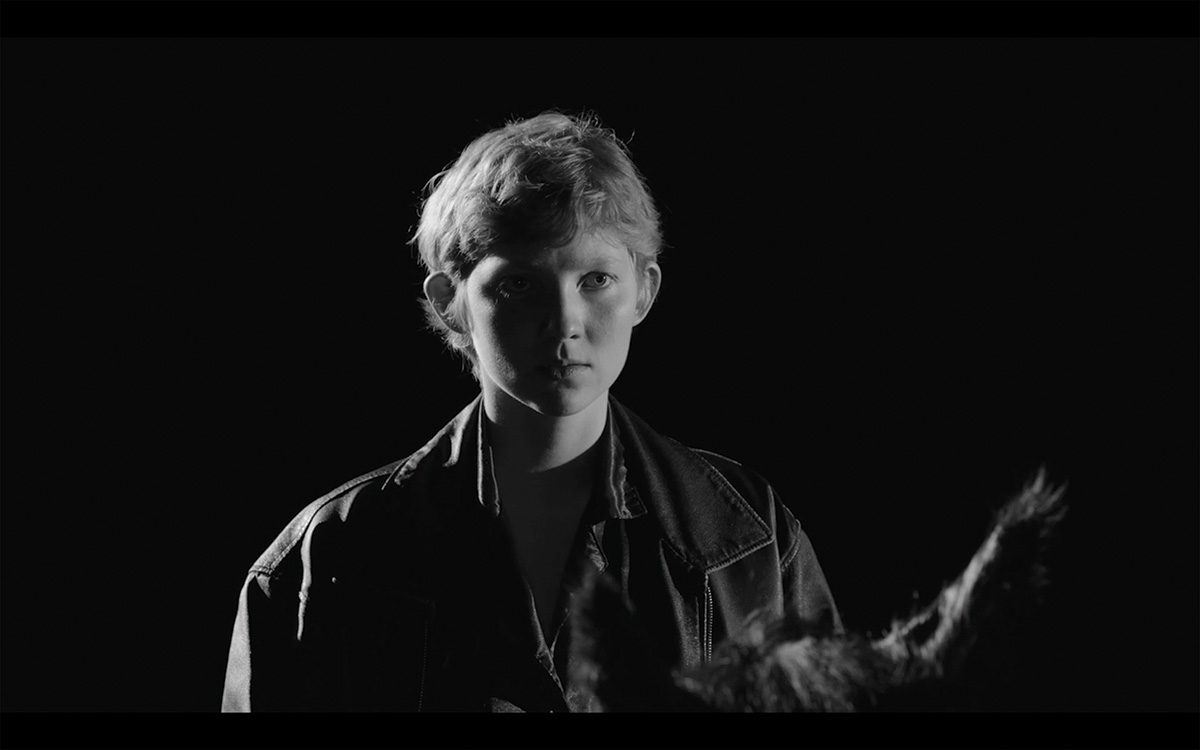
Gianna Felicita Scholten
At Night by Horse
Fiction expérimentale | hdv | couleur et n&b | 11:48 | Suisse | 2023
Micki rides across the night through a palm forest. With the quiet and the loneliness, the repressed heartbreak pushes to the surface and Cassi becomes real. Like two homopolar magnets charged with their tangled traumas, they fail to find each other this time once again. But at dawn the wounds heal. Cassi disappears and the last video is deleted. But you can't force goodbyes, because feelings are real.
Gianna Scholten is a writer and filmmaker from Switzerland and Germany. She graduated from the German Film and Television Academy Berlin (dffb) in 2020 and continued her studies at the Academy of Media Arts Cologne (khm). During her time at the khm, she dedicated herself to creating film projects and radio plays. Her work has been awarded the Prix Alice Guy Prize of the FID Marseille and the New Signs Award of the Film Fest Lago.
Fabiola Torres-alzaga : The Uninvited - Film expérimental | 4k | noir et blanc | 12:2 | Mexique | 2023
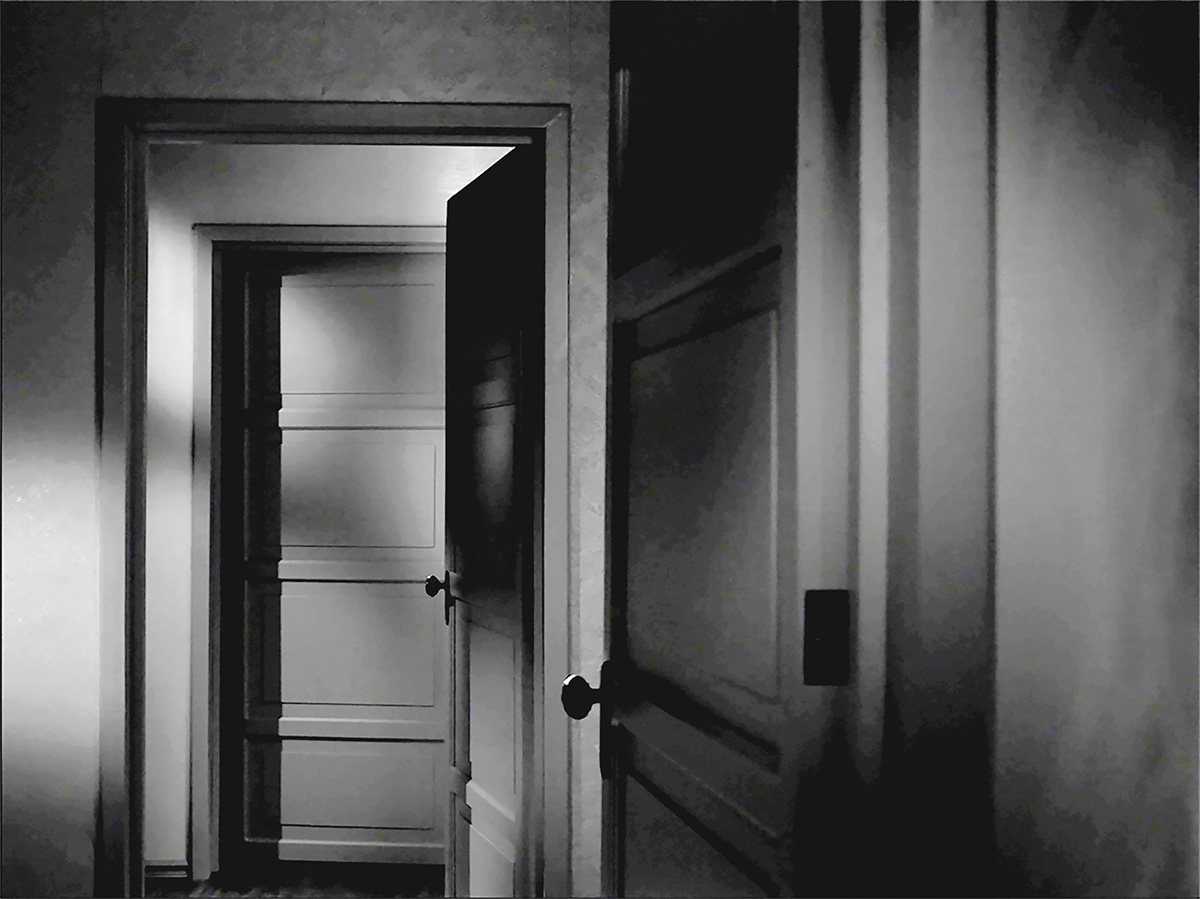
Fabiola Torres-alzaga
The Uninvited
Film expérimental | 4k | noir et blanc | 12:2 | Mexique | 2023
With no visible human presence, we move through the interior of a house. Like all houses, it contains spaces of darkness and corners hidden from view. That house, that interior, hides its flat background of ephemeral construction. We are inside a set built to the limits of the frame that films it. That house was only a fragment of what it appears to be. “The Uninvited” is a short film not about what there is, but about what there could be. Cinema is an apparatus of power over the representations shown therein and the bonds of continuity of a society. “The Uninvited” shows a house haunted by those absences, its blind spots and the violence of its limits and exclusion that its representations have meant.
Fabiola Torres-Alzaga is a Mexican artist working in contemporary art. She studied photography at “The active school of photography” and visual arts at “La Esmeralda” in Mexico City. She has been investigating focus and nearsightedness present in the act of gazing, and its repercussions in our socio-spatial relationships. I have a keen interest in cinema and its articulations of space and time, as well as stage magic and its defiance of logic. Both disciplines comprise the basis of my research. Through them, I seek to expand the scope of the visible, creating illusionary worlds that intrude into real space, counter-spaces that claim inclusive folds within the rigid limits of patriarchy to generate Other possible relations. Her work has been shows at MUAC (Mexico City, 2021), Lille3000 (France, 2019), the Biennal FEMSA (Zacatecas, 2018), the Anthology Film Archives (New York, 2018), the Biennal of Moving Images (Buenos Aires, 2018), the Paul Kasmin Gallery (New York, 2018), Videoex , Maison des Arts de Malakoff (France, 2016), the Polytechnic Museum of Moscow (Russia, 2015), MARCO (Monterrey, 2015), Museum of El Chopo (Mexico City, 2014), Museum of Modern Art (Mexico City, 2014), Laboratorio Arte Alameda (Mexico City, 2011), the Center for Contemporary Art (Tel Aviv, 2006) and Sala de Arte Público Siqueiros (Mexico City, 2004), among others. She has published “Historias de la noche” (Stories of the night, ESPAC, 2019) a book/project in dialogue with cinema curator Mara Fortes, and a solo catalogue “Fabiola Torres-Alzaga: In between acts” (Museo Universitario del Chopo, 2015), she´s currently a member of the Fonca’s Sistema Nacional de Creadores.
Kamil Dossar : Insert Song - Film expérimental | mp4 | couleur | 11:9 | Danemark | 2022

Kamil Dossar
Insert Song
Film expérimental | mp4 | couleur | 11:9 | Danemark | 2022
A stage unfolds and a love song is sung displaced from it’s owner. INSERT SONG is video-essay meditating on music and semiotics in relation to love, and how love declarations are falling victim to the image.
Kamil Dossar (b. 1988) is a Danish artist currently based in Copenhagen. Dossar’s practice is rooted in an interest in themes concerning identity and how we relate to images in contemporary society. Central to his work is the relationship between identity and the loss of it, and exploring the image in relation to the imageless, as a son to political refugees. By investigating visual identity and semiotics he renegotiates the status of the image by rearranging it into new modes of associations.
Nicolaas Schmidt : First Time [the Time For All But Sunset - Violet] - Fiction expérimentale | 0 | couleur | 49:0 | Allemagne | 2021

Nicolaas Schmidt
First Time [The Time for All but Sunset - Violet]
Fiction expérimentale | 0 | couleur | 49:0 | Allemagne | 2021
We listen to music and are on the way. In doing so, we see things and the world differently than before. So that things don't always go on like this, but may become better: Two boys meet on a train ride. Something is born – not much and yet everything. Enjoy a Golden Hour Carousel Ride. A Common Sensations Music Movie.
Nicolaas Schmidt lives and works as Filmmaker, Video- and Concept Artist in Hamburg, Europe. He studied Fine Arts, Time Based Media and Visual Communication (Film) at Hamburg Academy of Fine Arts. His works are shown at international film festivals, exhibitions and other contingencies.

Gianna Felicita Scholten filme une traversée de nuit, dans une forêt de palmiers. Dans le calme et la solitude, un chagrin d'amour remonte à la surface. Fabiola Torres-Alzaga interroge le cinéma comme appareil de pouvoir sur les représentations sociales. Elle se déplace à l’intérieur d’une maison, qui n’est qu’un fragment de ce qu’elle semble être. Kamil Dossar propose une sémiotique de l'amour, à travers une chanson, une lettre à un cœur brisé. Nicolaas Schmidt filme la rencontre de deux garçons dans un train. Quelque chose est né, pas grand-chose, et pourtant tout. Une succession de morceaux musicaux dirige le film, dans une réciprocité de la relation entre image et musique. L’expérience de l’intimité dans l’espace public est transformée en une expérience cinématographique, enrichie d’une miniature narrative – une histoire d'amour.
Expériences VR
Haus der Kulturen der Welt | Audifoyer
John-Foster-Dulles Allee 10, 10557 Berlin / Métro: lignes S5, S7, S9, S75, station: Hauptbahnhof
Entrée libre
"Déréalités, collages et utopies"
Les Rencontres Internationales Paris/Berlin vous invitent à faire l'expérience de 11 œuvres en réalité virtuelle. Rassemblées sous l'intitulé "Déréalités, collages et utopies", les œuvres choisies interrogent nos principes de réalité, nos perceptions diurnes et nos représentations quotidiennes.
Alexander Walmsley : Tirana Time Capsules - VR expérimental | 4k | couleur | 0:0 | Royaume-Uni, Albanie | 2021
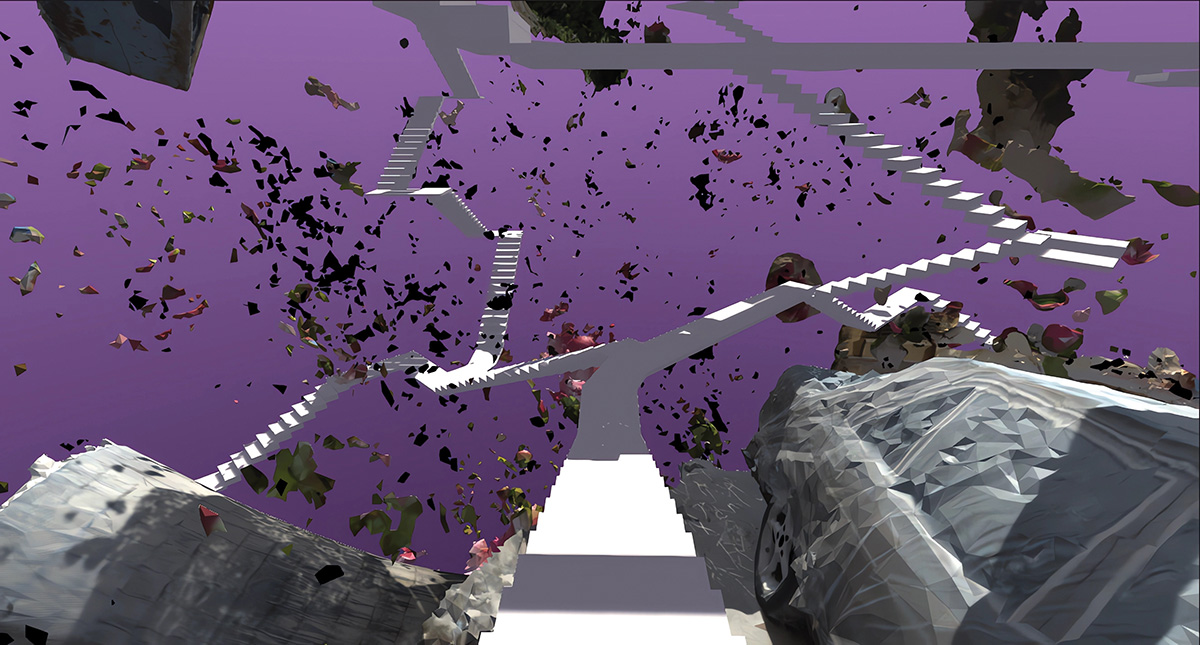
Alexander Walmsley
Tirana Time Capsules
VR expérimental | 4k | couleur | 0:0 | Royaume-Uni, Albanie | 2021
The Tirana Time Capsules are a series of three virtual environments, accessible via web browser, that act as time capsules for three different neighbourhoods of Tirana in 2021. The chosen areas - 21 Dhjetori, Kombinat, and the Teatri i Gjelbërimit, an area of the Tirana Great Park - each embody different aspects of Tirana’s urban development over the past 100 years. Particularly since the early 2000s, this has been characterised by the gradual disappearance of public space as the building sector has increasingly become controlled by private interests. Drawing on the metaphor of the time capsule and employing so-called high-fidelity recording techniques such as photogrammetry and field recording, the work re-appropriates and re-constitutes these different areas of the city as virtual environments as a way of exploring the intersection of personal memory and community heritage. In addition, the work seeks to question the promises made by such recording technologies that claim to render and preserve reality as a high-fidelity digital copy: in short, what exactly is being preserved when we use these techniques of digital preservation?
Alexander Walmsley (b. 1992) is a media artist with a particular interest in the landscapes of the real and the virtual. In his practice, he investigates how our understanding of these landscapes is shifting, mediated by the new technological, environmental and social realities of the 21st century. His work is situated primarily between 3D, photography, animation, and XR. His recent work has been shown at the Daejeon Biennale of Arts and Sciences, Tirana Art Lab, Sharjah Art Foundation, The Photographers' Gallery, and VRHam! Festival. He was a commissioned artist for the Albanian pavilion of the 59th Venice Biennale and has taken part in residencies at the Tirana Art Lab, Albania, and Moskosel Creative Lab, Sweden, among others. Previously, he studied Anthropology and Archaeology at the Universities of Cambridge (UK) and Geneva (CH).
Ana Elena Tejera : Mosquito: Historia De Una Herida - VR vidéo 360 | mp4 | couleur | 6:45 | Panama | 2022

Ana Elena Tejera
MOSQUITO: Historia de Una Herida
VR vidéo 360 | mp4 | couleur | 6:45 | Panama | 2022
A red jaguar, roams the early morning in the jungle of Panama until his footsteps are disturbed by a metallic sound that opens a gap in the earth. He enters the wound, where machines build a Canal and the metallic music gives life to the yellow mosquitoes. The workers blue tearful voices murmur resilience, longing for a rebirth of the jaguar on the scar.
Panamanian multidisciplinary artist in the fields of film and performance. She was artist in residence at Le Fresnoy. She was chosen as Berlinale Talent 2023. She worked on the restoration of part of the Panamanian film archive at the Filmoteca de Catalunya and on the creation of the "Festival de la Memoria", a series of performative installations in urban spaces with political archive images and sound performance. Panquiaco, his first documentary film, premiered at the International Film Festival Rotterdam. His latest short film, A Love Song in Spanish, participated in the official competition at the Berlinale and at the MoMA. Her first virtual reality film Mosquito: A Wound Story premiered at the International Film Festival Rotterdam. She is preparing his next solo exhibition and performance with Solar Gallery and Batalha Centro de Cinema de Portugal (2023).
Loukia Alavanou : On The Way To Colonus - VR vidéo 360 | mov | couleur | 20:0 | Grèce | 2021

Loukia Alavanou
On the Way to Colonus
VR vidéo 360 | mov | couleur | 20:0 | Grèce | 2021
Blind Oedipus, in older age, left Thebes as an exile accompanied by Antigone, who was both his daughter and sister. They sought refuge in Colonus of Athens. What if the tragic hero of Sophocles’ play 'Oedipus at Colonus' was a Romani nomad residing in today’s post-industrial outskirts of western Athens? OTWTC is a ‘docufictional’ VR film cast with Romani amateurs who live at the ghettoised toxic wastelands of Thriasian Plain, where Sophocles’ wandering hero is meant to have passed from. Consisted of a spatial sound design (ambisonics), the film's audio incorporates location sounds recorded inside the dwellings that merge “high” and “low” culture, often carrying with them the “eerie echoes” of dubbed TV series, speaking themselves about “Oedipal conflicts”, ‘absent fathers’, ‘incest’, murder and death.
Loukia Alavanou is a moving image artist and filmmaker. She is representing Greece at the 59th Venice Art Biennale with the exhibition “Oedipus in Search of Colonus. Alavanou holds an MA in Photography from the RCA in London. She was the winner of the 5th Deste Prize. In recent years, after receiving international acclaim, she started to be involved with the production of VR films and founded the first VR production company in Greece. She held a retrospective exhibition at State of Concept, Athens in 2018. For the years 2021 and 2022 Alavanou is a fellow artist at ONX Studio, organised by Onassis USA and the New Museum in NY. Alavanou’s work has been presented by institutions and festivals including KANAL Centre Pompidou, Accelerator, Stockholm, Gucci Garden, Kino Der Kunst, Palais de BOZAR, Palais de Tokyo, Athens Biennale, Moscow Biennale, Fiorucci Art Trust, The Museum of Cycladic Art, Benaki Museum. Her films are part of numerous collections including the Onassis Collection, the Dakis Joannou Collection, The Center for Art and Media Karlsruhe/ ZKM, PCAI/ Polyeco Contemporary Art Initiative.
Nicolas Gebbe : Lockdown Dreamscape Vr - VR vidéo 360 | 0 | couleur | 7:0 | Allemagne | 2021

Nicolas Gebbe
Lockdown Dreamscape VR
VR vidéo 360 | 0 | couleur | 7:0 | Allemagne | 2021
When spending a lot of time at home in isolation, the walls begin to move. The sense of time fades, the days pass quietly, everything seems to repeat itself endlessly. Spaces, conversations, visual impressions and sounds merge and make everything seem like a long dream.
Nicolas Gebbe was born in London in 1986. He currently lives and works in Frankfurt am Main / Germany as a 3D artist, filmmaker and sound designer. 2018 he receives his art diploma at Hochschule für Gestaltung Offenbach with a film major. He focuses on experimental 3D animation and hybrid film formats. Since graduation, his animated short films have been screened on a variety of festivals such as Locarno Film Festival, Festival du Nouveau Cinèma Montreal and Ann Arbor Film Festival.
Timo Wright : Everyday Vrealities - VR expérimental | 4k | couleur | 0:0 | Finlande | 2021
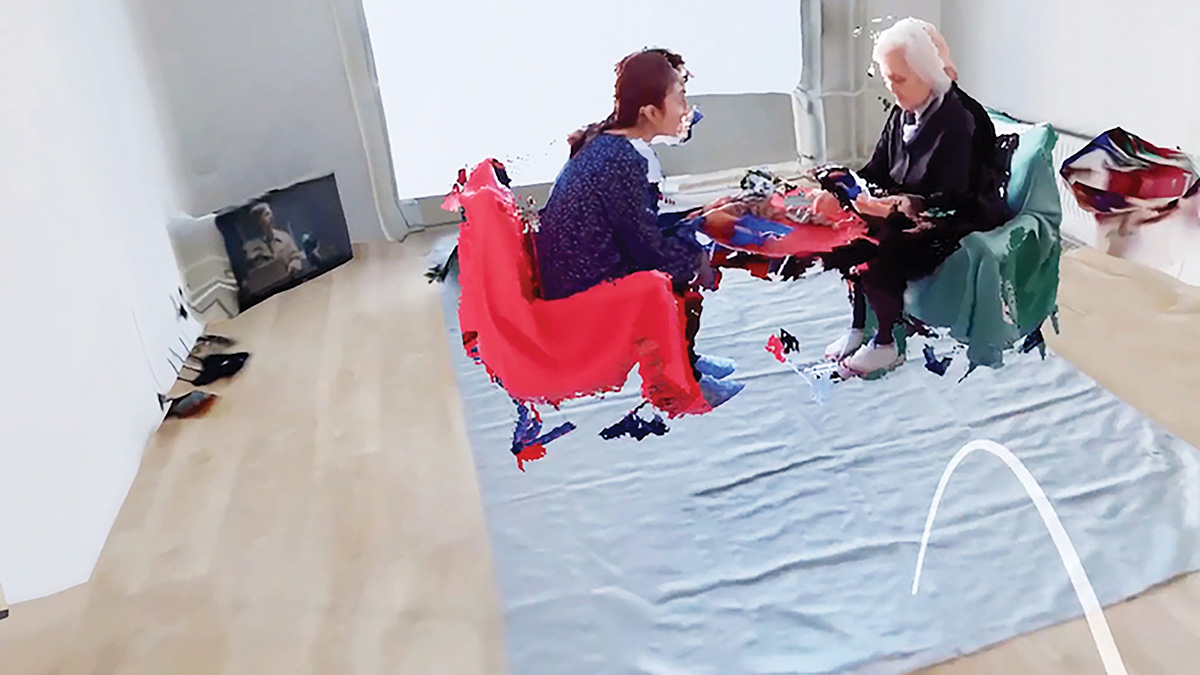
Timo Wright
Everyday Vrealities
VR expérimental | 4k | couleur | 0:0 | Finlande | 2021
Everyday Vrealities is a virtual reality documentary about different kinds of families, homes and ways of life. The viewer can, using their VR-headset, walk freely around from home to home, and witness everyday scenes happening in front of them. The film consist of nine homes, each linked to another. The viewer can witness a father playing games with his daughter, a couple doing yoga, a mother helping her son do his homework, an elderly mother teaching her daughter how to make pottery, a kid doing somersaults, a family with their newborn etc. The viewer can also re-enter some of the rooms to see new scenes. In the film there are no interviews or backstories. It is not a film of big emotions, but more of reflections and observation. It is in a sense “slow tv”, with seemingly nothing much happening. We can using the free movement in the space to quietly observe an everyday event unfolding, and even revisit it later if we want. The combined length of all clips is around 50 minutes.
Timo Wright is a media artist based in Helsinki, Finland. Noteworthy exhibitions include e.g. Nakanojo Biennale, Nikolaj Kunsthal, Kunsthall Charlottenborg, Samuelis Baumgarte Galerie, Galerie Anhava, Helsinki Art Museum, Helsinki Design Museum, Amos Anderson Art Museum, Kunsthalle Helsinki as well as festivals such as IDFA, Slamdance, Nordisk Panorama and International Film Festival Rotterdam. His films have been shown at over 80 festivals and exhibitions worldwide.
Pascal Piron, Karolina Markiewicz : Metamorphosis - VR expérimental | 4k | couleur | 24:0 | Luxembourg | 2021

Pascal Piron, Karolina Markiewicz
Metamorphosis
VR expérimental | 4k | couleur | 24:0 | Luxembourg | 2021
METAMORPHOSIS is a location based experience in virtual reality. It thematises the state of fear, astonishment and need for human exchange, as well as the the new comprehension and the physical reduction of the world during an ontological rupture such as the Coronavirus pandemic. In History (from the Antique with the first plague to Modern times with the Spanish flu) every kind of epidemic or pandemic has brought significant changes in societies, people had to adapt and reinvent their lives exchanging as they could. The experience refers to this kind of societal metamorphosis that imply on one hand the awareness of a reduced and different environment as well as related to the exchange of different ideas about the future . For METAMORPHOSIS, different nature and urban places (outside and inside) have been scanned and recreated as 3D scenes in a point cloud aesthetic. These eight scenes form a large corridor that brings the visitor slowly through different stories and ideas. From naive, stunned to more elaborate projections about the future of existence.
Since 2013 Karolina Markiewicz (born in 1976 in Luxembourg, lives and works in Luxembourg) and Pascal Piron (born in 1981 in Luxembourg, lives and works in Luxembourg) have been developing a collaborative body of work that stretches across cinema, visual arts and theatre. At its centre lies the individual as part of the human community, torn between resignation and hope. In their poetically charged investigations, the two artists question contemporary myths and construct metaphorical narratives based on past events.
Monika Maslon : Control Negative - VR expérimental | 0 | couleur | 40:0 | Pologne | 2022

Monika Maslon
Control Negative
VR expérimental | 0 | couleur | 40:0 | Pologne | 2022
The CONTROL NEGATIVE experience is an exercise in a loss. Using VR technology, author Monika Mas?o? situates the viewer in an emotional state where frustration, helplessness, anger, and sadness are used to reveal basic human assumptions, including the illusory conviction of being fully in control of one's own life. The unreal world of the experience — a negative version of the real world — is a training space where you can better understand yourself and your emotions. The user is guided through seven chapters, which gradually move from physical activity to contemplation.
Dr. Monika Maslon (born 1982) - visual artist and art educator. She graduated from the Academy of Fine Arts in ?ód? and Ph.D. studies at the Film School in ?ód?, where she completed her Ph.D. thesis entitled “Do zobaczenia” (See you), under the supervision of Prof. Józef Robakowski. She is a lecturer at the University of Leipzig and the Maria Grzegorzewska University in Warsaw where she conducts classes with the students of the department of Arts education in fine arts. In 2014 she stayed at an artistic residence in Singapore, where she made an artistic project called “Comfort of Long-Distance Perceiving”. In 2016 she implemented the project “Template - a tool to learn how to use an image”, as a part of a scholarship awarded by the Ministry of Culture and National Heritage. The scope of her art activities is manifested mainly through realizations based on audiovisual material. She participated in numerous exhibitions and shows. She is the author of the VR experience - CONTROL NEGATIVE.
Omid Zarei, Anne Jeppesen : A Vocal Landscape - VR expérimental | 0 | couleur | 14:0 | Danemark, France | 2023

Omid Zarei, Anne Jeppesen
A Vocal Landscape
VR expérimental | 0 | couleur | 14:0 | Danemark, France | 2023
A Vocal Landscape is a hyperrealistic VR experience that explores the strange anatomy of a conversation between two people. In a dreamlike journey, the spectator travels through an ever-changing room depicting their associations and unspoken interactions.
Omid Zarei is a French-Iranian artist and XR producer on the quest to explore alternative ways of storytelling. He creates projects that blur the boundaries of different platforms, creating a space for collaboration between artists from a diverse range of disciplines. In 2015 he developed VR filmmaking workshop in Helsinki, one of the first VR focused workshops in Europe. He is the creator of the project Songs of Future Past, a re-imagined VR take on Opera. Anne Jeppesen is a Copenhagen-based producer with a focus on audio documentaries. She has produced audio productions for national radio, as well as immersive audio experiences for museums and theatre. With a background in classical music and musicology, Anne is driven by a never fading fascination for the richness of the human voice and is constantly seeking out new ways to work with vocal expressions. Their latest joint project “A Vocal Landscape” won an EPIC MegaGrants and a special prize in Vancouver International Film Festival for a collaboration with Microsoft Mixed Reality Capture Studio.
Federico Solmi : The Bacchanalian Ones - VR expérimental | 0 | couleur | 0:0 | USA | 2021
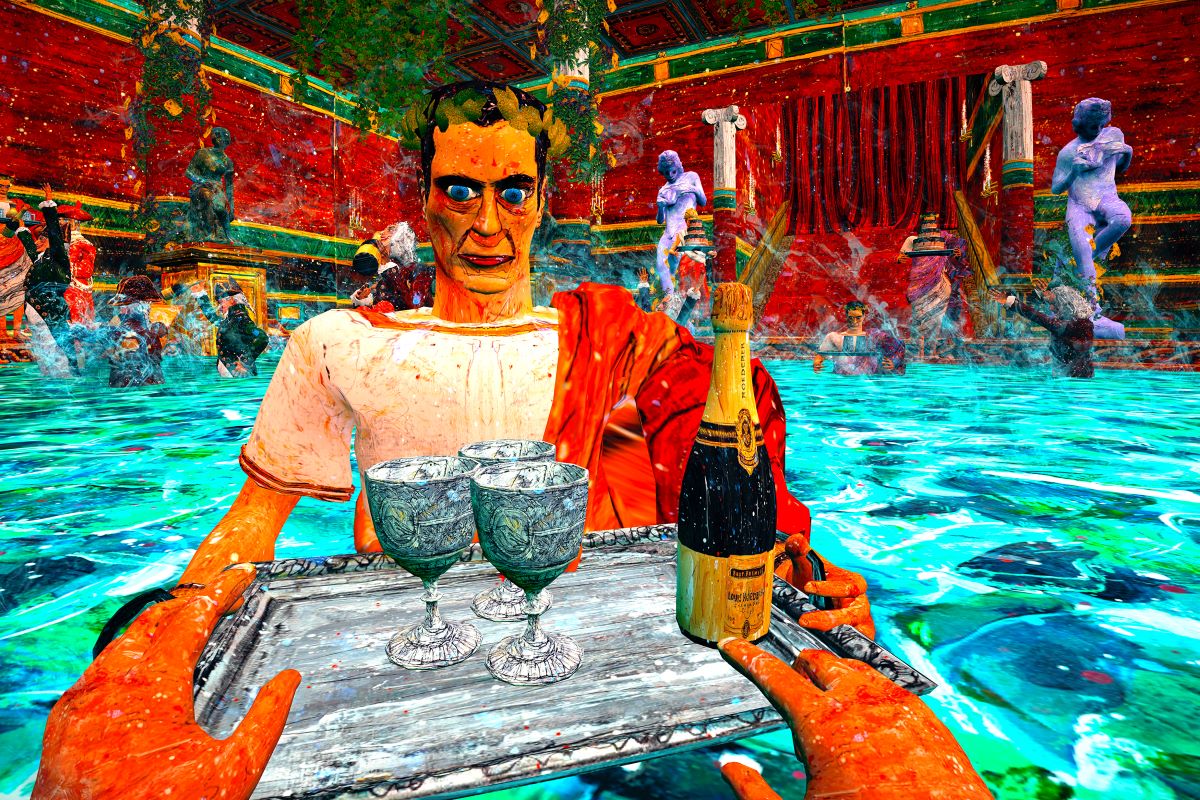
Federico Solmi
The Bacchanalian Ones
VR expérimental | 0 | couleur | 0:0 | USA | 2021
The Bacchanalian Ones, VR Experience for Oculus Quest 2 Inspired by ancient mythology, modern myth, and contemporary celebrity culture, The Bacchanalian Ones compares the historical myth with a satirical mash-up of the powerful self-absorbed who preen and wallow in a banal spectacle of their own creation. In a fantastically opulent setting of unrestrained hedonism, political, religious, and military leaders with ghoulish, bouffonesque appearances are surrounded by social elite sycophants like the devotees of the cults of Bacchus and Dionysus. Solmi’s phantasmagoric world of whirling space, jerking movement, and oscillating facades that strive to overwhelm the viewer’s visual field is pushed to extremes in a new interactive Virtual Reality installation. This work invites the visitor to enter the Bacchanal by donning a VR mask and manipulating two hand-held controllers in order to pick the perspective of one of his historical avatars. Newly empowered, and emboldened, the visitor is able to control the narrative, allowing them to experience the debauchery up close and personal through their embodiment of the avatar.
Federico Solmi was born in Bologna, Italy in 1973. Since 1999 he has lived and worked in New York. Solmi’s work utilizes bright colors and a satirical aesthetic to portray a dystopian vision of our present-day society. His exhibitions often feature articulate installations composed of a variety of media including virtual reality experiences, video installation, painting, drawing, and sculpture. Solmi uses his art as a vehicle to stimulate a robust conversation with his audience, highlighting the contradictions and fallibilities that characterize our time. In 2009, Solmi was awarded by the Guggenheim Foundation of New York with the John Simon Guggenheim Memorial Fellowship in the category of Video & Audio. Solmi’s work was included in the 100-year anniversary exhibition of The Phillips Collection, Seeing Differently, and in the Smithsonian National Portrait Gallery’s traveling exhibition, Outwin 2019: ‘American Portraiture Today,’ as well as the inaugural exhibition of the Ocean Flower Museum Island in Hainan Province, Danzhou, China. From 2016 to 2019 Federico Solmi was visiting Professor at Yale University School of Art, and Yale School of Drama, New Haven CT. Solmi was appointed guest critic at the Yale University School of Art for 2022.
Wojciech Pus : Endless - Vr Segue - VR vidéo 360 | 0 | couleur | 18:0 | Pologne | 2022

Wojciech Pus
Endless - VR Segue
VR vidéo 360 | 0 | couleur | 18:0 | Pologne | 2022
A queer poem about gender transformations, hallucinogenic desires, and uncanny relationships. It’s past dawn, in an apartment inhabited by several figures. They are frozen in time, frozen in the movements they were making. They look at each other, caress each other, sleep, masturbate with VR helmets on their faces. In one magical moment, they come to life and start a languidly intoxicating party. In Wojciech Pu?’s essayistic 360° film, we follow several people of different genders and ethnic identities as they navigate a path through night, life, desire, and futility. Fragments of their stories are only fleetingly revealed in poetic speeches that resemble a verbal symphony rather than a narrative. The director builds the experience on hallucinogenic light work and uncomfortable camera movements. Will this party ever end, or have we found ourselves trapped with the characters in a labyrinth of existence that has no end?
Wojciech Pu? - filmmaker and artist. They work with moving images and sound. Their films/installations/live acts have been screened / exhibited / shown at Warsaw’s Museum of Modern Art, Haus der Kulturen der Welt in Berlin (Rencontres Internationales Paris/Berlin), ICA in London, Museé du Louvre in Paris (Rencontres Internationales Paris/Berlin), Foksal Gallery in Warsaw, Art Museum in Lodz, Urban Glass in New York, A:D: Curatorial in Berlin, Spike Art Magazine / Yvonne Lambert in Berlin and Exchange Gallery in Lodz. Professor at the Cinematography Department in Lodz Film School, Poland.
Doireann O'malley : New Maps Of Hyperspace - VR vidéo 360 | 4k | couleur | 6:44 | Irlande | 2020

Doireann O'malley
New Maps of Hyperspace
VR vidéo 360 | 4k | couleur | 6:44 | Irlande | 2020
The work is a parable on Alan Turing’s technological disembodiment, drawing on concepts from Terrence McKenna’s Hyperspace, an undoing of the matter of consciousness and technologies empty promises of liberation and progress. Imagining a future self calls for a dreaming of the kind Terence McKenna evokes in his essay New Maps of Hyperspace (1989) and from which this work formed the research. For McKenna the dream is “zero time” and “outside of history.” It is analogous to the speculative experience of hyperspace, a scifi term given to the space-time continuum in which it is possible to travel faster than light. In both states, time appears to stand still (Einstein’s theory of relativity tells us that the closer an object travels to the speed of light the slower time becomes). Dreaming can quickly turn to nightmare however, and the episodic repetition of history-as-nightmare can, at times, feel like farcical simulation. Finally this work touches on the yawning gaps between our wish for escape, human connection and approval — and our seemingly Sisyphean task of achieving any of it. Hyperspace is a notion from science fiction of a superluminal method of travel. It is typically described as an alternative “sub-region” of space co-existing with our own universe which may be entered using an energy field or otherdevice. In most fiction, hyperspace is described as a physical place that can be entered and exited. Whereas in the VR work the viewer is essentially trapped in blue screen of death, unable to escape. (Text by Thomas Butler)
Doireann O’Malley (born 1981 in Limerick, IE) is a multidisciplinary artist based in Berlin. Their research-led practice unites collaborative methodologies, healing and reparative movement, writing, and theory, with a strong technological emphasis on new media, virtual Reality, 3Dand film installation. O’Malley holds an MFA from University of Ulster in Belfast, UK. From 2021- 2022 held the position of Professor of Gender & Space at Akademie der bildenden Künste Wien. They were a research fellow at the Berliner Förderprogramm Künstlerische Forschung (2020-2021) and a participant of the BPA// Berlin programme for artists (2019-2020). They acted as a guest mentor on the The Live Arts MA / AdBK Nuremberg (2001) Their exhibitions, talks and screenings have been presented at IMMA, Dublin, IE; Art Institute, Basel, CH; Biennale Zielona Góra, PL; Goethe-Institut Montreal, CA; Goethe-Institut, NY, USA; Neuer Berliner Kunstverein (n.b.k.), Berlin, DE; National Sculpture Factory/Cork Film Festival, Cork, IE; GöteborgInternational Biennial for Contemporary Art, SE; Rencontres Internationales, Forum des Archives, Paris, FR & HKW, Berlin, DE; Mumok Kino, Vienna, AT; Dublin City Gallery, Dublin, IE; KW Institute for Contemporary Art, Berlin, DE; Berlin Art Prize, 2018, Berlin, DE; Edith-Russ-Haus für Medienkunst, Oldenburg, DE.

Projection
Haus der Kulturen der Welt | Safi Faye Hall
John-Foster-Dulles Allee 10, 10557 Berlin / Métro: lignes S5, S7, S9, S75, station: Hauptbahnhof
Entrée libre
"La monnaie vivante"
Jules Ramage : Ghostmarkets - Doc. expérimental | 0 | couleur | 6:24 | France | 2022

Jules Ramage
Ghostmarkets
Doc. expérimental | 0 | couleur | 6:24 | France | 2022
Ghostmarkets est né d’un travail de terrain ayant débuté en détention en septembre 2019 : prenant pour point de départ l’interdiction de toute transaction dans l’espace carcéral, dix hommes détenus s'engagent dans la création d'un réseau de production monétaire à l'intérieur des murs. Les débats menés à cette occasion témoignent de l'existence préalable d'un système économique invisible, basé sur l’échange de services, les dettes d'honneur et la performance de la masculinité. Alors qu'il dirige et capte ces échanges, Jules Ramage mesure progressivement la complexité de sa position : le protocole de vérification des cartes SD transforme son camescope en outil de surveillance. Les archives audios, vidéos et textuelles de cette expérience collective sont montées en un film "troué", marqué par l'extraction des voix de ses collaborateurs détenus, concentrant l'attention sur la matière, sa transformation et sa prise de valeur symbolique. Avec John Dow, Ben, Christophe, Brahli, Sparafucile, Youssef Rhnima, Philippe T., Ilich.
Jules Ramage (1987, France) est artiste visuel. Docteur en Sémiologie du Texte et de l’Image, il est aussi chercheur associé au laboratoire CERILAC d’Université Paris-Cité, et membre de la Cité du Genre, institut interdisciplinaire de recherche en études de genre. Il explore les relations de pouvoir mises en jeu dans les structures disciplinaires et institutionnelles. Depuis 2013, il poursuit un travail de terrain approfondi dans l’espace carcéral, où il implante des protocoles collaboratifs intégrant personnes détenues et surveillant-es. Son travail a été présenté en France, aux États-Unis, en Argentine, en Angleterre, en Espagne et en Allemagne. Il a été résident du CENTQUATRE-Paris, de la Cité internationale des arts, des Ateliers Médicis et du Fresnoy-studio national des arts contemporains. Pour Ghostmarkets, Jules Ramage collabore avec un groupe d’hommes détenus au sein de la maison centrale de Poissy, constitué en 2015 dans le cadre de la Section des Etudiants Empêchés, programme d’enseignement porté par l’université de Paris. Au fil des années, le groupe prend son autonomie et prend l’identité d’un collectif de recherche-création collaborative. Il comprend : John Dow, Ben, Christophe, Brahli, Sparafucile, Youssef Rhnima, Philippe T., Ilich.
Phillip Warnell : The Whole Nine Yards - Doc. expérimental | 0 | couleur | 16:0 | Royaume-Uni | 2023

Phillip Warnell
The Whole Nine Yards
Doc. expérimental | 0 | couleur | 16:0 | Royaume-Uni | 2023
Working with a redacted audio recording and transcript of an interview, The Whole Nine Yards explores the cool economy, loneliness and deep exposure of an anonymised New York drug dealer during his incarceration. However, his testimony, far from being police statement or court confession, is gleaned verbatim from a casting audition from a feature film (Good Time, Ben & Josh Safdie 2016) migrated into the project. He is now deceased. The recollections peak during a haunting attempted murder, nine dudes going 'the whole nine yards'. One of two new companion pieces to Intimate Distances (2020), it forms a new body of work that relates to the uneasy rapport between film-making and crime-making. This functions in a space where casting interview and crime testimonial become indiscernible, and can be received as either discarded testimony or audition as witness.
Phillip Warnell is an artist-filmmaker and writer from London, a first generation university graduate from a working class background. He produces cinematic and art works exploring a range of philosophical, poetic and sensorial thematics: ideas on human-animal relations, the political and cinematic imagination, the presence of those with prescient or extraordinary attributes and the poetics of bodily and life-world circumstances. His work is often performative, establishing elements for a film shoot as (part) event, resulting in an interplay between scripted, documented and (sometimes) precarious filming circumstances. Phillip Warnell is an academic, and has undertaken visiting professorships, fellowships and held posts at Harvard University (Film Study Center, 2017-18), Warwick University (UK) Art & History of Medicine, George Mason University (USA), University of Lincoln (UK) and Beijing Normal University (China) amongst others.
Rafaela Lopez : Showtime - Documentaire | mov | couleur | 39:10 | France, USA | 2022
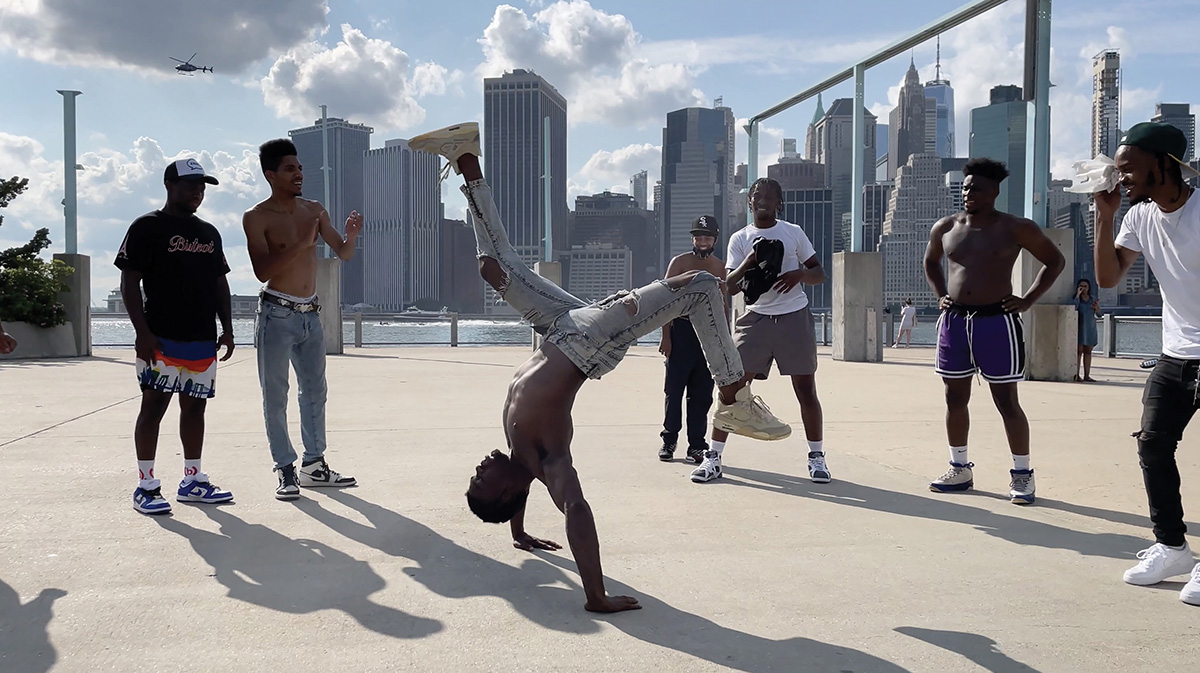
Rafaela Lopez
Showtime
Documentaire | mov | couleur | 39:10 | France, USA | 2022
Le film suit pendant deux ans le quotidien d’un groupe de danseurs du métro new yorkais. Des trains à leurs domiciles, de leur lieu d’entrainement aux événements organisés par leur communauté, c'est un portrait de cinq individus et du milieu de la danse Hip Hop de New York. C’est aussi un portrait de la ville, de la société dans laquelle ils évoluent. Malgré les obstacles, leurs origines sociales et le racisme, ils sont déterminés à réussir et se débattent par tous leurs moyens contre un système méritocratique illusoire.
Rafaela Lopez (née en 1988 à Paris) est une artiste plasticienne travaillant à New York et à Paris. Son travail se déploir à travers des films, des performances, des sculptures, des dessins et des projets collaboratifs. Elle s'intéresse aux pratiques créatives marginalisées, aux cultures populaires et aux constructions socio-culturelles. Chacun de ses projets cherche un langage spécifique, adapté aux communautés impliquées, et questionne le rôle social de l’art. Rafaela Lopez a étudié au Royal College of Art (Londres), à la Villa Arson (Nice) et à l’École Nationale Supérieure des Arts Décoratifs de Paris. En 2015, elle est lauréate du Prix de la Région Sud à Art-O-Rama (Marseille), en 2017 de la bourse des Mécènes du Sud (Montpellier / Sète), en 2020 elle est nommée pour le Prix Sciences Po pour l'art contemporain (Paris), en 2021 elle est lauréate de la Fondation des Artistes et en 2022 du prix Social Practice Arts, organisé par le Centquatre, la Fondation Calouste Gulbenkian et les Fondations Edmond de Rothschild. Elle a exposé dans divers lieux en France et à létranger tels que Waissac Project (Wassaic, NY, 2022), le Consulat Grec de NY (NY, 2020), FLAX (Los Angeles, 2018), la Fondation Louis Vuitton (Paris, 2018), le Palais de Tokyo (Paris, 2017), le Centre National d'Art Contemporain de la Villa Arson (Nice, 2012, 2014, 2017), Studio Voltaire (Londres, 2015), le Camden Art Centre (Londres, 2015), Flat Time House(Londres, 2014, 2015). Elle a été artiste en résidence à FLAX (2018, Los Angeles), à la Villa Arson (2017, Nice), aux Laboratoires d'Aubervilliers (2017, invitée par Grace Ndiritu), à la Villa Lena (2015, Palaia) et à la Casa de Velázquez (2014, Madrid). Rafaela Lopez est l'ancienne présidente de DOC!, un espace artistique indépendant situé dans le nord de Paris.
Jonathas De Andrade : Olho Da Rua - Film expérimental | 4k | couleur | 25:13 | Brésil | 2022

Jonathas De Andrade
Olho da Rua
Film expérimental | 4k | couleur | 25:13 | Brésil | 2022
Starring a cast of 100 people, Olho da Rua (Out Loud) is divided into eight acts and presents performance propositions in front of the camera as exercises of the gaze. Simple actions are presented, such as looking and admiring oneself in front of a mirror, improvising an assembly and saying messages to the camera, representing a collective party making the public square a great stage, or facing the camera lens that it's the eye of the beholder, whether on the streets or on the movie screen when it's ready. Made in two days at Praça do Hipódromo, in Recife, the film is made up of a cast of homeless people, linked to public shelters and non-governmental initiatives to support the vulnerable population.
Jonathas de Andrade was born in Maceió, Brazil, in 1982, and studied communications at the Universidade Federal de Pernambuco, Recife. He works with installation, photography, and video to explore constructs of love and the process of urbanization, with particular emphasis on Brazil’s vibrant but often ignored northeast region. De Andrade’s series Love and Happiness in Marriage (Amor e Felicidade no Casamento, 2007) juxtaposes photographic portraits of a young couple with pages from a 1960s psychiatric textbook on love and marriage. What appear to be vintage shots are actually new images of contemporary actors, their treatment and combination framing the popular ideals of romance and family as bourgeois fictions. In 2 in 1 (2 em 1, 2010), diagrams and photographs of carpenters illustrate the process of converting two single beds into a double and also seem to offer functional instruction on how to “make” a couple. Tropical Hangover (Ressaca Tropical, 2009) also employs found material, in this case a salvaged diary that forms the basis for an installation in which a book’s pages are illustrated with original, vintage, and found photographs, offering a reflection on memory, modernity, and urban space. Since 2007, many of de Andrade’s ideas have been developed in collaboration with A Casa como Convém (The House as It Should Be), an artists’ collective that he founded with Cristiano Lenhardt and others in Recife. The group, which focuses on issues around tropical modern architecture, offers a valuable counterpoint to the dominant cultural axis of São Paulo and Rio de Janeiro. One example of the influence of collectivity and local community on de Andrade’s work is The Uprising (O Levante, 2012), for which the artist organized a horse-drawn cart race in the center of Recife. Also inspired by the town is De Andrade’s mural Nostalgia, a Class Sentiment (Nostalgia, Sentimiento de Classe, 2012). This work, constructed from 340 primary-colored geometric fiberglass tiles displayed in a segmented composition, reproduces a tiled panel in a Recife tropical modern house, and is shown opposite a vinyl text that quotes manifestos about modern life composed by two Brazilian architects of the 1960s and ’70s. Some of the tiles interrupt these texts, the suggestion of loss offering pointed comment on the failure of Brazil’s modernist project. De Andrade has had solo exhibitions at Instituto Cultural Itaú, São Paulo (2008); Instituto Cultural Banco Real, Recife (2009); Centro Cultural São Paulo (2010); Kunsthalle Lissabon, Lisbon (2013); and Musée d’art Contemporain de Montréal (2013). He participated in the group exhibitions When Attitudes Became Form Become Attitudes, CCA Wattis Institute for Contemporary Art, San Francisco; and Salvajes: Digesting Europe Piece by Piece, Traneudstillingen Exhibition Space, Copenhagen (both 2012); and EXPO 1: Rio, Museu de Arte Moderna de Rio de Janeiro; Love and Hate to Lygia Clark, Zach?ta National Gallery, Warsaw; HIWAR, Conversations in Amman, Darat al Funun, Amman, Jordan; My Third Land, Frankendael Foundation, Amsterdam; Imagine Brazil, Astrup Fearnley Museet, Oslo; La Bienal 2013: Here is where we jump, El Museo del Barrio, New York; and Moving: Norman Foster on Art, Carré d’Art, Musée d’Art Contemporain, Nîmes (all 2013). He participated in the Mercosul Biennial, Porto Alegre, Brazil (2009); São Paulo Biennial (2010); Sharjah Biennial, United Arab Emirates (2011); Istanbul Biennial (2011); New Museum Triennial: The Ungovernables, New York (2012); and Lyon Biennial (2013). De Andrade lives and works in Recife.

Jules Ramage collabore avec un groupe de détenus au sein de l’établissement pénitentiaire de Poissy, interrogeant les notions de valeurs et de sa circulation. Prenant pour point de départ l’interdiction de toute transaction dans l’espace carcéral, ils créent un réseau de production monétaire. Philippe Warnell travaille à partir d'un enregistrement audio qui explore la solitude d'un dealer new-yorkais anonyme pendant son incarcération, dans un espace où l'interview du casting et le témoignage d’un crime deviennent indiscernables. Rafaela Lopez réalise le portrait d’un groupe de danseurs du métro new yorkais, et celui de la ville dans laquelle ils évoluent. Malgré les obstacles, leurs origines sociales et le racisme, ils sont déterminés à réussir et se débattent contre un système méritocratique illusoire. Au Brésil, Jonathas de Andrade transforme l’espace public de Recife en une grande scène des performances réalisées en collaboration avec cent personnes sans abri.
Projection
Haus der Kulturen der Welt | Safi Faye Hall
John-Foster-Dulles Allee 10, 10557 Berlin / Métro: lignes S5, S7, S9, S75, station: Hauptbahnhof
Entrée libre
"Non humain, trop humain"
Andro Eradze : Raised In The Dust - Vidéo | 4k | couleur | 7:45 | Georgie | 2022

Andro Eradze
Raised in the Dust
Vidéo | 4k | couleur | 7:45 | Georgie | 2022
Inspired by Donna Haraway and John Berger’s contemporary theories on interspecies relations, Andro Eradze fills the frames of his works with plants and animals poised to exceed their boundaries. His camera follows scenes on the cusp of something undefined: a smouldering campfire, a stormy forest of wind-whipped trees, a flooding football pitch. Accompanied by haunting, transcendent soundtracks, his films feel like a compilation of the transitional moments of a feature film, leaving the viewer with a sense of expansive anticipation. Eradze’s new video installation for The Milk of Dreams, titled Raised in the dust (2022), stems from the conclusion of classical Georgian poet Vazha-Pshavela’s The Snake Eater (1901). The poem’s protagonist has a supernatural talent for understanding the language of nature; he must decide between his connection to nature and his social responsibilities, ultimately bowing to the latter. Eradze’s film takes place in a forest. Taxidermized animals appear one by one, disturbed by an uproar of New Year’s Eve fireworks. Critical of the human carnival that is disruptive, toxic, and fatal for wildlife, Eradze’s film repositions fireworks as an entry point onto the dark and mythological side of the forest, a world of plants, animals, and phantoms.
Andro Eradze (b. 1993) lives and works in Tbilisi, Georgia. He studied at the Shota Rustaveli Film Academy, as well as CCA-T (Center of Contemporary Art Tbilisi) MFA program. His works meditate on the qualitative nature of images, still as well as moving. Working primarily in Georgia, Eradze experiments with introducing narratives to the outskirts of human habitation, in the literal and figurative sense. The feeling of an uncanny, non-anthropocentric presence in his works invites the viewer to the liminal space between the subjective and the visceral, between cognition, perception and the alien otherness of non-human experience. Animals, objects, plants, and digital artifacts permeate a sense of presence in a landscape that exists simultaneously parallel and entangled human experience. Eradze’s practice investigates the potentiality of animism as method. Photography, installations, experimental cinema practices and video blend into a project contemplating the fading present, in which the Anthropocene is faltering, and everything operates independently of it. Building upon the legacy of alternative approaches to reality—surrealism and magical realism—his images blur the distinction between the imaginary and the real.
Eteam : Our Non-understanding Of Everything 04 - Vidéo | hdv | couleur | 14:13 | Allemagne, USA | 2022

Eteam
Our Non-Understanding of Everything 04
Vidéo | hdv | couleur | 14:13 | Allemagne, USA | 2022
What is our relationship to our tech devices? How do smart devices exist in the world? What do we want from them? What do they want from us? "Our Non-Understanding of Everything" is a daily practice, where we observe and speculate of how our personal tech devices and their building parts exist in a possible future, shared between the architecture of circuitry, political thought and the wild and programmed parts of our natural environments. “Our Non-Understanding of Everything” signals a complete openness to learn, shift viewpoints, upturn embedded prejudices, discover, surprise and draw connections between phenomena and things that reside and operate in wildly diverse realms. The project aligns with non-representational ideas, in which events and encounters in the world are constituted through emergent, relational, and intangible complexities that cannot necessarily be articulated or contained within the particular ways we attempt to represent them.
eteam is a two people collaboration who uses video, performance, installation and writing to instigate and articulate encounters at the edges of diverging cultural, technical and aesthetical universes. Traversing over earthly planes they trigger communication, collaborations and transformations between humans, nature, and technologies. Through their artistic practice eteam finds ways to collaborate with people who operate on the edges of mainstream culture and the marketplace. They are drawn to those willing to experiment, cross genres and cultural boundaries, they forge proximity and make visible the interconnections we humans share with land, animals, plants, ghosts, deities and objects. Eteam’s work is land- and process-based, often long term, situational and happens in places they don’t inhabit permanently. Practicing art is their way to enter the “outside,” pay close attention to the details, while trying to understand the whole. Eteam’s narratives have screened internationally in video- and film festivals, they lectured in universities, presented in art galleries and museums and performed in the desert, on fields, in caves and on mountaintops, in ships, black box theaters and horse-drawn wagons. They could not have done this without the generous support of Creative Capital and The John Simon Guggenheim Memorial Foundation, Art in General, NYSCA, NYFA, Rhizome, CLUI, Taipei Artist Village, Eyebeam, Smack Mellon, Yaddo and MacDowell, the City College of New York, the Academy of Visual Art HKBU and the Fulbright Scholar Program, among many others. Their novel “Grabeland” was published by Nightboat Books in February 2020. They are represented by Gallery M29, Cologne Germany and Video Data Bank, Chicago.
Matthias MÜller, Christoph Girardet : No Animal - Vidéo expérimentale | 4k | couleur et n&b | 21:3 | Allemagne | 2022

Matthias MÜller, Christoph Girardet
No Animal
Vidéo expérimentale | 4k | couleur et n&b | 21:3 | Allemagne | 2022
Time and again, the feature film places animal actors at the side of its human protagonists – sometimes as loyal companions, sometimes as fierce opponents. However, its stagings do not only instrumentalise animals to release emotions, but also raise a fundamental question of our anthropocentric self-image: how to deal with the experience of the otherness of the animal?
Christoph Girardet, born in 1966, and Matthias Mu?ller, born in 1961, have been collaborating in film, video, photography, and installation since 1999. They had solo exhibitions at institutions such as FACT, Liverpool, Kunstverein Hannover and West, The Hague. They have participated in group shows at the Palais de Tokyo, Paris, Hirshhorn Museum, Washington, and Eye Filmmuseum, Amsterdam, among others. Both have taken part in major film festivals worldwide, including the festivals at Cannes, Venice, Berlin, Toronto, Locarno, Oberhausen and Rotterdam. Their work is included in several public and private collections.
Brit Bunkley : The Peaceable Kingdom - Vidéo expérimentale | mp4 | couleur | 5:28 | Nouvelle-Zélande, Espagne | 2023

Brit Bunkley
The Peaceable Kingdom
Vidéo expérimentale | mp4 | couleur | 5:28 | Nouvelle-Zélande, Espagne | 2023
“The Peaceable Kingdom” is a deep fake ontology. It is a dreamscape of various domestic and wild animals inhabiting human architectural spaces metaphorically and physically as both totems and discrete intelligent beings. The title is taken from a series of paintings by the Quaker minister and painter, Edward Hicks.
Brit Bunkley is a New Zealand-based artist and videographer whose practice includes the construction of large-scale outdoor sculpture and installations as well as the creation of ‘impossible’ moving and still images and architecture designed using 3D modeling, video editing, and image editing programs. Bunkley, an NZ/USA citizen, has also been a recipient of a National Endowment for the Arts fellowship and the Rome Prize Fellowship in the USA. International screenings include the White Box gallery in NYC and the Rencontres Internationales Paris/Berlin. In 2012 Bunkley was an award winner at the Moscow Museum of Modern Art for the «Now&After» Festival. He took part in the Athens Digital Arts Festival and File Sao Paolo 2017, 2018, and 2019. Bunkley screened his video, Ghost Shelter/6 at The Federation Square Big Screen, Channels Festival 2017, Melbourne, and at the Oberhausen Short Film Festival, Oberhausen, Germany in 2018, Docfest Kassel 2019 and Jihlava IDFF 2021 and 2022, Czech Republic. And Video Art Miden and Video Art Projects, Municipal Gallery of Thessaloniki, Thessaloniki, Greece, FILE SP 2023 exhibition and Hochkantfilmfest, Portrait -video on advertising billboards, Bremen, Germany in 2023 Recent group exhibitions include the “Stories of Rust”, Tauranga Art Gallery, Tauranga, NZ, and “Green Around'' in Taipei, Taiwan in 2019, the Auckland Botanic Gardens 2022 and “Sculpture on the Gulf” 2022, Auckland, NZ, the “2021 National Contemporary Art Award”, Waikato Museum, Waikato, NZ and “Visions in the Nunnery”, Bows Art/Nunnery Gallery, London in 2022. Recent solo exhibitions include Solo exhibitions include the Sarjeant Gallery, Whanganui, New Zealand in 2018, the Institut für Alles Mögliche/Stützpunkt Teufelsberg, Berlin 2019, The Rabbit Room, Napier, NZ 2022, at Scott Lawrie Gallery, Auckland New Zealand 2022, and aGallery, Whanganui, NZ.
Freja Sofie Kirk : Killing Kidding Colliding - Vidéo expérimentale | mov | couleur | 7:6 | Danemark | 2022

Freja Sofie Kirk
Killing Kidding Colliding
Vidéo expérimentale | mov | couleur | 7:6 | Danemark | 2022
A bird carries us swiftly through empty lobbies and offices of a bank in Frankfurt, until it collides with a glass façade and falls to the floor. In this way, ‘Killing Kidding Colliding’ shows glass as both a material and an ideological symbol, moving between transparency and reflection, making things visible but impossible to touch. Moving mechanically between the different spaces of the bank, it draws attention to its own technique, while looking at the power and ideology of modern architecture, and how its immediate openness, transparency and smoothness also contain an underlying and invisible volatility.
Freja Sofie Kirk is a visual artist based in Copenhagen. Working across video, photography and installation, and often in connection with each other, she looks at the inner mechanisms and contradictions of images. Her work takes the form of a continuous study of spatial and medial constructions, the violence they perform and the architecture they manifest. By utilizing the camera, Freja Sofie Kirk attempts to renegotiate the power relations inherent in both archi- tecture and image production.
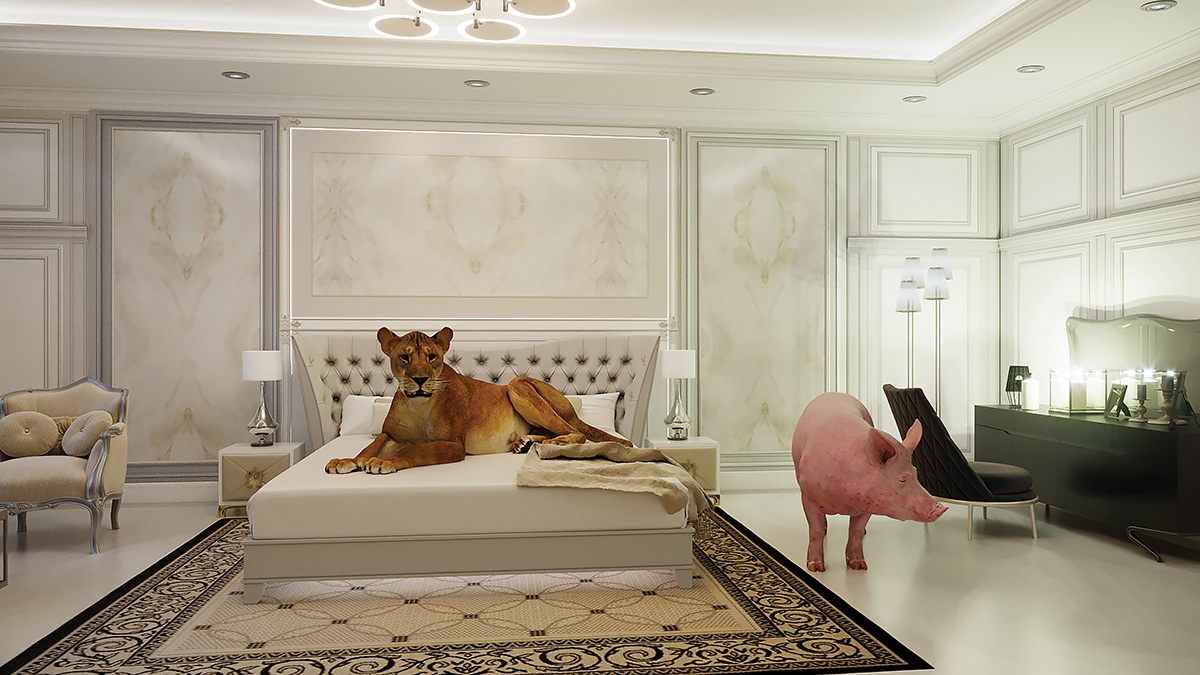
Andro Eradze s'inspire de la conclusion du poème « Le mangeur de serpent » (1901) du poète géorgien classique Vaja Pshavéla. Le protagoniste du poème possède un talent surnaturel pour comprendre le langage de la nature ; il doit alors choisir entre ce lien et ses responsabilités sociales. Des animaux taxidermisés apparaissent dans une forêt les uns après les autres, dérangés par le vacarme des feux d'artifice de la Saint-Sylvestre. Le collectif Eteam pose la question de notre relation avec les appareils technologiques, en prenant en compte nos environnements construits et l’environnement naturel. Matthias Müller et Christoph Girardet interrogent, dans le champ du cinéma, la place des acteurs animaux aux côtés des protagonistes humains, tantôt fidèles compagnons, tantôt féroces adversaires. Ces mises en scène instrumentalisent le vivant pour provoquer des émotions, mais soulèvent également une question fondamentale sur la représentation anthropocentrée : comment envisager l'altérité de l'animal ? Brit Bunkley crée une fausse ontologie, un paysage de rêve dans lequel divers animaux domestiques et sauvages habitent des espaces architecturaux humains, métaphoriquement et physiquement, à la fois comme des totems et des êtres intelligents discrets. Freja Sofie Kirk suit un oiseau, qui nous transporte à travers les halls et les bureaux vides d'une banque de Francfort, jusqu'à ce qu'il heurte une façade en verre et tombe sur le sol.
Projection
Haus der Kulturen der Welt | Safi Faye Hall
John-Foster-Dulles Allee 10, 10557 Berlin / Métro: lignes S5, S7, S9, S75, station: Hauptbahnhof
Entrée libre
"Zone critique"
Kristina Norman : Thirst - Fiction expérimentale | 4k | couleur | 16:7 | Estonie | 2022

Kristina Norman
THIRST
Fiction expérimentale | 4k | couleur | 16:7 | Estonie | 2022
The film Thirst is a post-human choreography of machines and displaced plants. Millions of tons of Estonian peat end up in greenhouses in the Netherlands, where it is used as a soil substrate for tropical Phalaenopsis orchids. Meanwhile, local communities in Estonia are left with dry wells and a lack of drinking water as their fragile wetlands are drained for peat extraction. The orchids from the Netherlands then find their way back to supermarkets and homes in Estonia. It is a thirst for luxury and abundance that keeps the capitalist machinery running. Thirst is one episode from Kristina Norman’s Orchidelirium film trilogy. Commissioned for the Estonian Pavilion at the 59th International Art Exhibition – La Biennale di Venezia. Author and director: Kristina Norman Cinematographer: Erik Norkroos Composer: Märt-Matis Lill Choreographer and cast: Mari Mägi Produced by Rühm Pluss Null in collaboration with CCA Estonia
Kristina Norman (b.1979, lives and works in Tallinn) is an artist whose interdisciplinary work includes video installations, sculpture, and projects in the city space, as well as documentaries and performance. She is interested in the issues of collective memory, the memorial uses of the public space, but also the subtle sphere of the body politic that transgresses the boundaries between the public and the private. In 2009 she represented Estonia at the 53rd International Art Exhibition – La Biennale di Venezia, with a solo project; a multilayered mixed media installation entitled After-War. The project was a study of a conflict around the relocation of a Soviet monument in Tallinn. In 2022 at the 59th edition, the artist again represented Estonia with an ecocritical exhibition “Orchidelirium. An Appetite For Abundance”, a duo show with Bita Razavi, curated by Corina Apostol. Norman’s experimental film trilogy commissioned for the Estonian Pavilion, offers multiple ways to reflect on the legacies of colonialism from a specifically Eastern European perspective.
Michiel Van Bakel : What Wide Web? - Vidéo expérimentale | 4k | couleur et n&b | 5:0 | Pays-Bas | 2022

Michiel Van Bakel
What Wide Web?
Vidéo expérimentale | 4k | couleur et n&b | 5:0 | Pays-Bas | 2022
For some years Wood Wide Web is the magic phrase to describe the web of roots, fungi and bacteria helping to connect trees and plants to one another. In ‘What Wide Web?’ Van Bakel depicts the surreal wasteland of Rotterdam Maasvlakte and its forest of pylons. After a bumpy ride we zoom in on the improbable beauty germinating underneath high voltage lines, a living part of our world hardly ever noticed. The plants that grow below the energy-web are shown as in a digital herbarium. We can ask ourselves: are industry and nature evolving more into co-existence? Background info: Location: Rotterdam harbour, Beerweg Maasvlakte, a place that used to be a nature reserve called ‘de Beer’. Sound: Contact mics on humming power-pylons. Geophones in the earth on the spot that record the sound of falling raindrops. Camera: Animation of still photographs made with home-built scannercamera. Instead of bringing plants to a picture-scanner in his studio, the artist dragged the scanner on site over soil and green. “A forest ecology is a delicate one. If the forest perishes, its fauna may go with it. The Atshean word for world is also the word for forest.” Ursula K. Le Guin from The Word for World is Forest.
Michiel van Bakel studied astronomy, film/photography (Psychopolis; Frans Zwartjes) and psychology for several years before he chose for fine art, at art school. Van Bakel expresses himself artistically in film and videos, sculpture and installations. His work focuses on people and their surroundings, often resulting in a poetic reality. It conveys a fascination for the tension between humans and technology, and the perception of time in our disrupted ecosystems. Van Bakel lives and works in Rotterdam.
Coyote : New Centuries Are Rare - Doc. expérimental | 0 | couleur et n&b | 11:15 | Suède | 2022
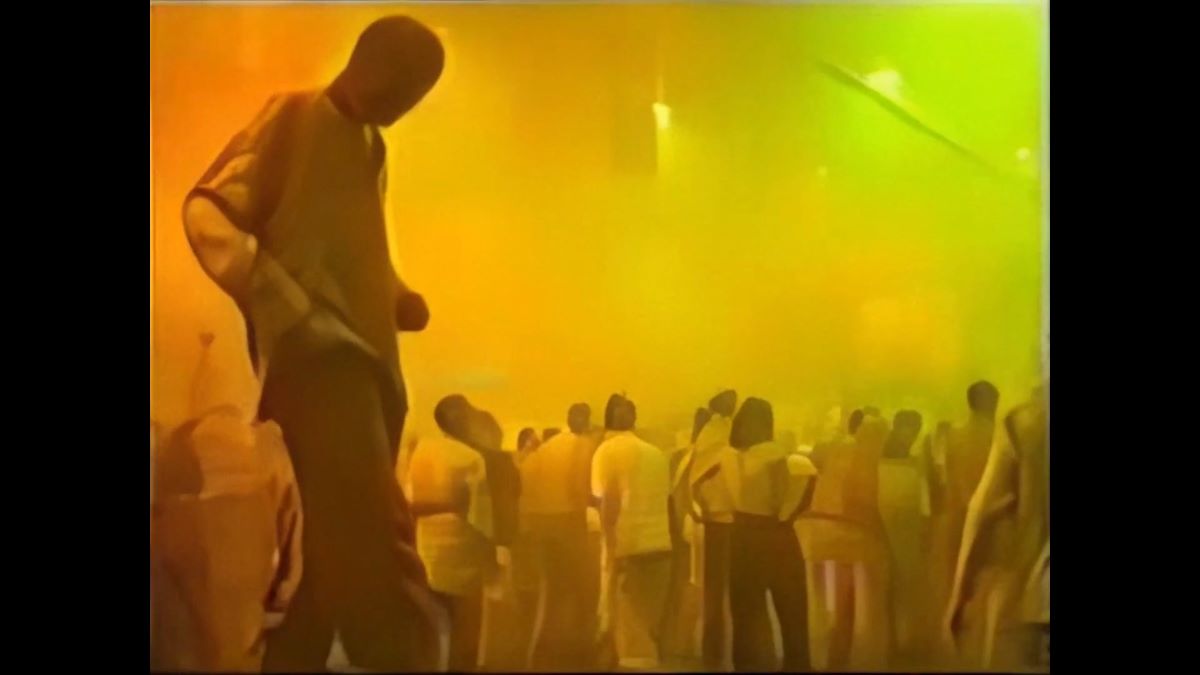
Coyote
New Centuries Are Rare
Doc. expérimental | 0 | couleur et n&b | 11:15 | Suède | 2022
New Centuries Are Rare is a short film by the artist collective coyote (SWE/DK). The film explores the interlaced history of the former mining village Norberg in Sweden and the emblematic story of the electronic music scene at the turn of the last century. Sampling these intersections in time, New Centuries are Rare unfolds a journey through psychological, chemical and technological rhythms placed in close proximity to the grinding resistance present in the region’s past.
coyote is a multidisciplinary artist collective founded in 2017. Their collective practice is constantly in flux and moves between artistic and curatorial work. In addition to several self-produced exhibitions and projects, coyote have exhibited at Bizarro (DK), KØS - Museum of Art in Public Spaces (DK), Index - The Swedish Contemporary Art Foundation (SE), NSFW/SVILOVA (SE) and curated events at Filmform (SE), Moderna Museét (SE) and Bonamatic (DK) among others.
Sonia Levy : Creatures Of The Lines - Film expérimental | mov | couleur | 19:54 | France, Royaume-Uni | 2021
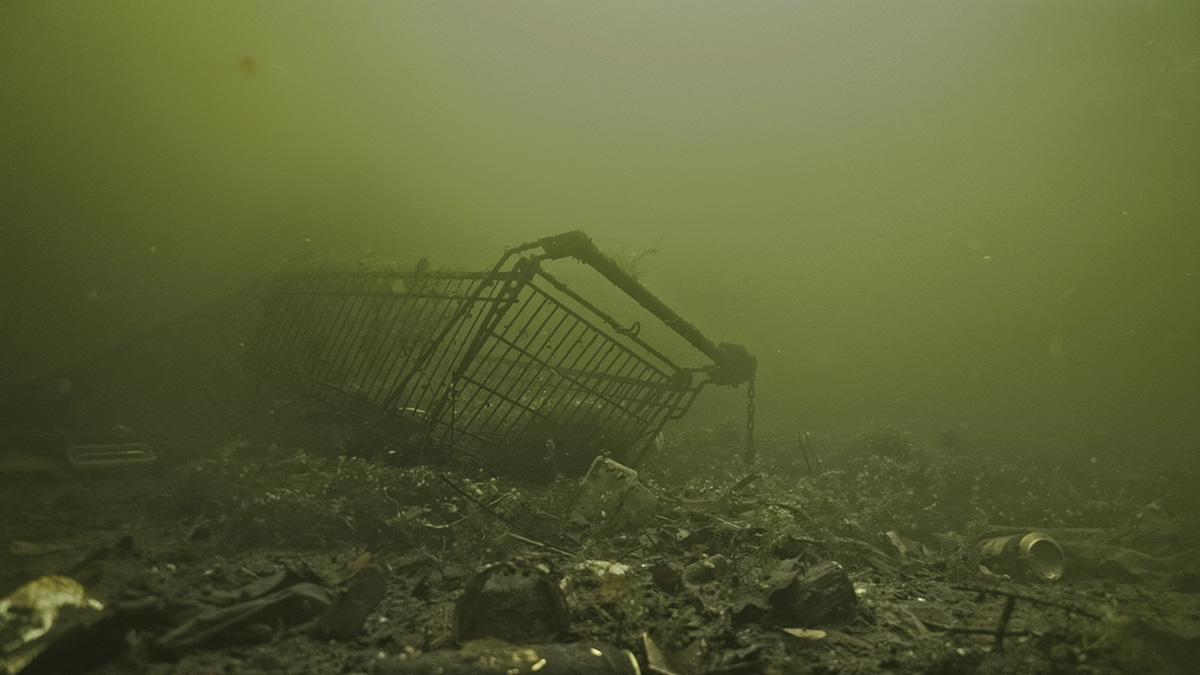
Sonia Levy
Creatures of the Lines
Film expérimental | mov | couleur | 19:54 | France, Royaume-Uni | 2021
Creatures of the Lines is an artist film and collaboration with anthropologist Heather Anne Swanson. It explores how desires for economic growth and linear progress have produced straightened forms in England’s watery terrains and asks what risks are associated with the conversion of once-curvy and braided worlds into a linearised landscape. Drawing on their longstanding research interests and conversations exploring the risks to and in aquatic ecologies with freshwater scientists, the film explores how English waterscapes have been transformed via the construction of canals. As arteries of British Empire, canals linked Indian cotton fields to domestic textile mills, facilitating vast ecological transformations from monoculture agriculture in the colonies to industrial discharges in England’s waters, soils, and air– and thus serve as a key site for exploring often-overlooked histories of colonial capitalism and their material presences in contemporary worlds. Attempting to work from within muddy, submerged sites, rather than from grand narratives or “god’s-eye” viewpoints, the work begins inside canals, telling stories from within the lines. Making use of the open-ended sensibilities of ethnography and natural history, it raises questions about ecological transformations and their ties to infra/structures of global political economy.
Sonia Levy's inquiry-led practice considers shifting modes of engagement with more-than-human worlds in light of prevailing Earthly precarity. Her work operates at the confluence of knowledge practices to interrogate Western expansionist and extractivist logics. She is the 2023-2024 recipient of the European Marine Board artist-in-residence programme. She was the 2022 selected artist of the S+T+ARTS4Water residency hosted by TBA21 in Venice and the 2021 commissioned artist at Radar Loughborough and Aarhus University's "Ecological Globalization Research Group". She has presented her work internationally, including shows and screenings at Ocean Space, Venice; Museo Thyssen, Madrid; Museo CA2M, Madrid; Sainsbury Centre, Norwich; ICA, London; The Showroom, London; Goldsmiths College, London; BALTIC, Gateshead; ZKM, Karlsruhe, Art Laboratory Berlin; HDKV, Heidelberg; Centre Pompidou, Paris; Musée de la Chasse et de la Nature, Paris; Muséum d'Histoire Naturelle, Paris, Verksmiðjan á Hjalteyri, Iceland Whale Museum, Iceland; Harvard Graduate School of Design, Cambridge USA; NYU Gallatin, New-York, Paris. Her work has been published by MIT Press and Thames & Hudson.
Devadeep Gupta : Normalisation Of A Disaster - Film expérimental | mp4 | couleur | 8:46 | Inde | 2020

Devadeep Gupta
Normalisation of a Disaster
Film expérimental | mp4 | couleur | 8:46 | Inde | 2020
While observing an isolated event of an artificial, industry-facilitated disaster, Normalisation of A Disaster makes a reflective commentary on the psyche of people in the vicinity of the site of disaster, albeit not immediately affected by it. Exploring the ideas of nonchalance, sensitization and casual tourism towards sites of disaster in a region plagued by disasters, this reflection includes the self of the artist, and his family, and hordes of ‘tourists’ attracted towards the light of the morbid spectacle. The Baghjan Oil Blowout happened on 27th of May 2020, which caught fire through a massive explosion on 9th of June 2020 after leaking gas in the atmosphere for two weeks, continued to burn for 6 months, before being finally doused on 15th of November, 2020. This artificial disaster in an Oil-India Limited owned site has caused the displacement of more than 1600 families who were in the vicinity of the site of gas blowout, and were being sheltered in makeshift relief camps in nearby areas.
Devadeep Gupta B. 1989 Guwahati, Assam, India I frame my artistic process as an exploration of regional ecological uncertainties through a critical examination of associated mainstream perspectives. Inspired by site-specific and vernacular occurrences, I delve into the intricate relationship between people and their land. My artistic practice encompasses the realms of film and sculpture, bridging the gap between conceptual and documentary approaches. Within this intersection, I am particularly interested in narratives that emerge from the convergence of mythology and contemporary experiences. Grounded in the rich cultural landscape of Assam, I draw inspiration from pragmatic practices, oral traditions, and folklore. Central to my artistic endeavors are performative processes that pay homage to meta-cultural practices. Through visual and conceptual stimuli, I incorporate elements of local community-led actions to portray the environmental changes specific to each site. Everyday rituals that have organically evolved as meta-cultural actions inspire the forms and expressions within my artistic practice. The outtakes of my process, realized as rhythmic sculptural forms are expressed through mediums of film, image and sculpture to illustrate these outcomes. ?
Adam James Smith : Frontier Phantom - Doc. expérimental | 0 | couleur | 24:37 | Royaume-Uni, USA | 2023
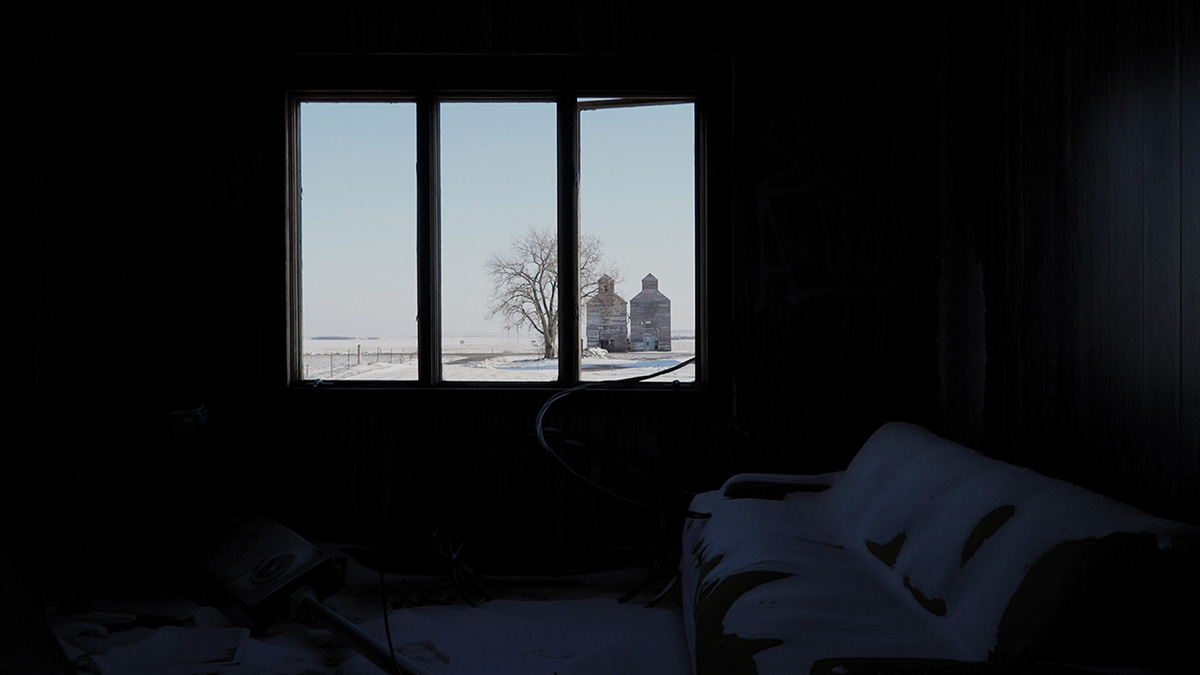
Adam James Smith
Frontier Phantom
Doc. expérimental | 0 | couleur | 24:37 | Royaume-Uni, USA | 2023
In the dead of winter, the gas flares and spectral sounds of an oil boom awaken the long-abandoned prairies and ghost towns of North Dakota.
Adam James Smith is a British filmmaker based in New York. His filmmaking practice spans rural and urban environments across China, Japan, and the United States. His first feature film, The Land of Many Palaces, on the Chinese "ghost city" of Ordos, participated in the Sundance Institute workshop and premiered at the 2015 Santa Barbara International Film Festival. The film then went on to screen at festivals and on television around the world, picking up awards in Moscow, Rome, and Kyoto. His follow-up film, Americaville, on the Chinese replica of Jackson Hole, Wyoming was sponsored by the Whicker's Foundation and the Asian Cinema Fund. The film was released in 2020 and has since been screened around the world at festivals and universities. Adam is currently completing a series of films documenting the diversity of the rural experience throughout the American heartland, including the country’s oldest Black rodeo in Okmulgee Invitational, the oil boom awakening the abandoned homesteads of North Dakota in Frontier Phantom, and Native American cowboys in Arapaho Pasture. Adam was educated in film at Stanford and anthropology at Cambridge, the latter of which he is currently an Affiliated Filmmaker at the university’s Visual Anthropology Lab.

Michiel van Bakel filme le terrain vague surréaliste de la Maasvlakte de Rotterdam et sa forêt de pylônes. Une improbable beauté germe sous les lignes à haute tension. Kristina Norman documente la façon dont des millions de tonnes de tourbe prélevées en Estonie finissent comme substrat à la culture d’orchidées tropicales dans des serres aux Pays-Bas, orchidées qui seront envoyées dans le monde entier, y compris en Estonie. Sonia Levy explore la façon dont les paysages aquatiques anglais ont été transformés par la construction de canaux à l’époque de l’Empire britannique. Véritables artères, ils reliaient les champs de coton indiens aux usines textiles nationales, et constituent aujourd’hui un matériau important pour saisir les effets négligés du capitalisme colonial sur les écosystèmes contemporains. En Inde, après l’explosion pétrolière de Baghjan en 2020, qui a provoqué d’immenses feux pendant plus de six mois et a entraîné le déplacement de 1 600 familles dans des camps de réfugiés, Devadeep Gupta réfléchit sur la psyché des personnes à proximité du lieu du désastre, habitants ou touristes attirés par la lumière du terrible spectacle. Dans le Dakota du Nord, en plein essor pétrolier, Adam James Smith filme au cœur de l'hiver les torchères et les bruits spectraux qui réveillent les villes fantômes et les prairies depuis longtemps abandonnées, offrant une vision apocalyptique d'une terre dépourvue de vie humaine, animale ou végétale, animée seulement par la spéculation sur les combustibles fossile.
Projection
Haus der Kulturen der Welt | Safi Faye Hall
John-Foster-Dulles Allee 10, 10557 Berlin / Métro: lignes S5, S7, S9, S75, station: Hauptbahnhof
Entrée libre
Séance de clôture
"Frontières mouvantes"
Younès Ben Slimane : We Knew How Beautiful They Were, These Islands - Doc. expérimental | hdcam | couleur | 20:0 | Tunisie, France | 2022
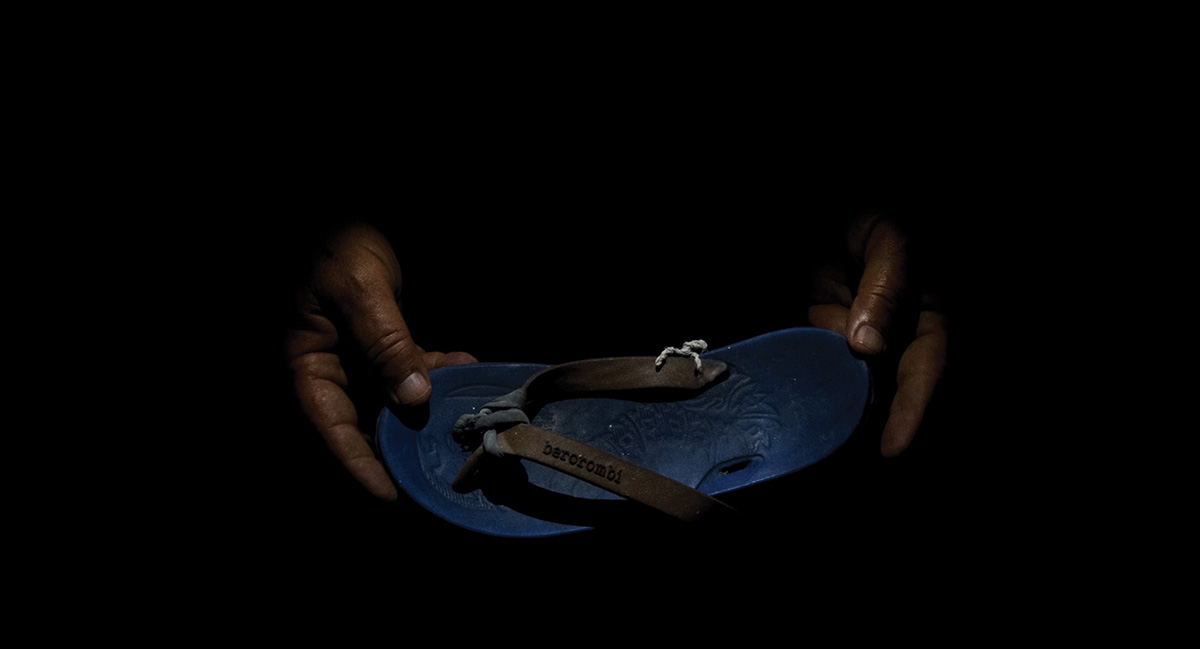
Younès Ben Slimane
We Knew How Beautiful They Were, These Islands
Doc. expérimental | hdcam | couleur | 20:0 | Tunisie, France | 2022
A lone figure digs a grave in the dead of night. With no dialogue – and no sound other than the wind, the crackling of a fire and the scrape of a shovel against dry earth – we are confronted with a dark and mysterious, possibly cursed, universe where every object seems haunted by a meaning we barely sense, but which seem to confirm our anxieties. The head of an old doll, a comb, a lipstick. Relics whose silent language speaks of the end of their former owners. At sea, in the desert. Younes Ben Slimane’s disturbingly beautiful and melancholic imagery is bathed in darkness and in a golden chiaroscuro, lit only by the stars and the lone grave diggers’ headlamps.
Younès Ben Slimane : Artiste et cinéaste tunisien, diplômé du Fresnoy – Studio national des arts contemporains en 2022. Ses films ont été sélectionnés dans des festivals internationaux parmi lesquels Locarno Film Festival, CPH:DOX, DokuFest, Festival dei Popoli. Il a reçu le a remporté le Tanit d'or aux journées cinématographiques de Carthage (2019), le Prix Studio Collector(2021) et le prix Loop Barcelona(2022).Son travail fait partie des collections d’institutions et de musées d’art notamment l’institut d'art contemporain, Villeurbanne/Rhône-Alpes (IAC), France et le Musée d'art contemporain de Barcelone, MACBA - Barcelone, Espagne. Actuellement, Younès Ben Slimane se consacre au développement de son prochain film grâce au programme Focus Script du Festival de Cannes.
Elie Maissin, Mieriën Coppens : Et Leurs Lettres - Documentaire | 0 | noir et blanc | 25:0 | Belgique | 2023

Elie Maissin, Mieriën Coppens
Et leurs lettres
Documentaire | 0 | noir et blanc | 25:0 | Belgique | 2023
Des centaines de lettres de convocation arrivent dans le ba?timent occupe? par La Voix des Sans Papiers. Avec soin, Kande? et Taslim trient et distribuent les lettres aux occupants qui devront comparai?tre devant le tribunal. Les jours se de?roulent comme d'habitude, les occupants restent vigilants. La nuit, dans une pie?ce au fond du couloir, ils re?pe?tent ensemble avec Modou, un occupant aguerri, comment comparai?tre devant un juge. Le jour du proce?s tout le monde se pre?sente au fur et a? mesure, dans les couloirs du tribunal re?sonnent les bruits d’une occupation.
Elie Maissin 1990° et Mieriën Coppens 1992° sont des cinéastes belges. Depuis 2015, ils documentent la lutte du collectif militant bruxellois " La Voix des Sans Papiers ". Depuis sept ans, Elie Maissin et Mieriën Coppens ont réalisé plusieurs courts métrages : Carry On, Almost At Rest, This House, We Are Stubborn, A new street, Caught In The Rain et And Their Letters. Ils recherchent un équilibre entre l'attestation d'une existence réelle et l'évocation d'autres possibilités d'existence.
Stéphanie Roland : Le Cercle Vide - Documentaire | hdv | couleur et n&b | 19:0 | Belgique, France | 2022

Stéphanie Roland
Le cercle vide
Documentaire | hdv | couleur et n&b | 19:0 | Belgique, France | 2022
Rien ne survit vraiment ici. Le fond est si profond qu’aucune lumière n’y pénètre jamais. Très peu de bateaux y passent. On ne sait pas quand les chutes auront lieu. Ce documentaire expérimental dresse le portrait d’un objet spatial et sa chute jusqu’aux ténèbres d’un cimetière spatial, une scientifique nous dévoile son attachement pour cet objet et l’absence d’images documentant ce lieu mystérieux. Voyage de Science-Fiction inversé, cet essai mélange archives réelles et fictives pour nous guider, tel un stalker, aux périphéries d’un lieu invisible.
Stéphanie Roland est une artiste visuelle et réalisatrice, basée à Bruxelles. Elle réalise des films et des installations qui explorent, entre le documentaire et l’imaginaire, les structures invisibles du monde occidental, les larges échelles du temps et les hyperobjets. ?Son travail est régulièrement présenté au niveau international, ses projets ont été inclus dans des expositions d'institutions majeures parmi lesquelles la Biennale de Venise, le Centre Pompidou, le musée du Louvre, le musée Benaki, la Biennale internationale d'art de Kampala, l’ISELP et le Wiels, entre autres.
Edouard Decam : Calibration - Film expérimental | 16mm | couleur | 15:49 | France, Espagne | 2023
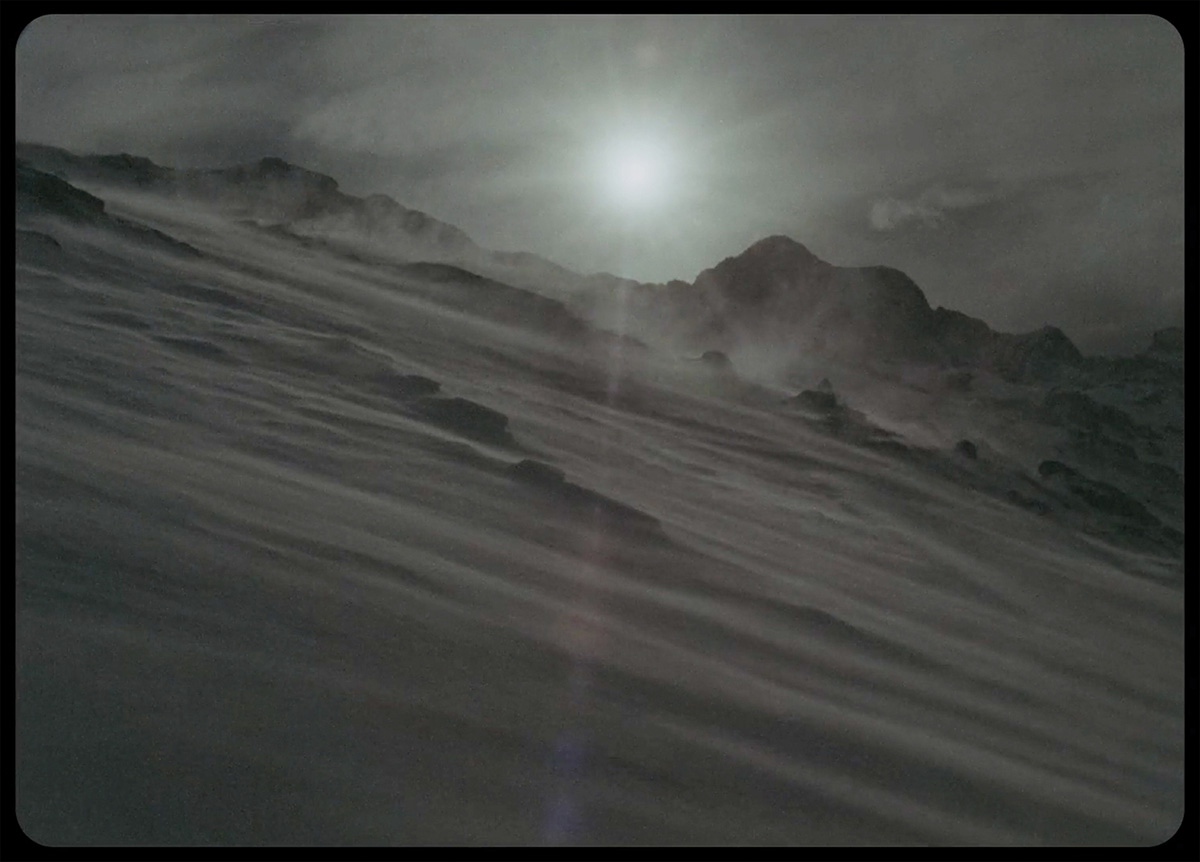
Edouard Decam
Calibration
Film expérimental | 16mm | couleur | 15:49 | France, Espagne | 2023
« Tout a tendance à dériver avec le temps et perd de sa précision de façon périodique. Un ajustement assure que la précision reste au niveau requis. » Comme une invocation, une nécessité de calibration du paysage qui perdrait petit à petit sa condition naturelle, le film projette une nature mouvante, en constante modification et réajustement. Les niveaux de vents, hauteurs de neiges, les compositions physiques, géologiques, morphologiques et temporelles s’étalonnent lentement, la montagne s’équilibre. Dans la continuité de « Volva », film tourné en 2016 à l’observatoire astronomique du Pic du Midi, « Calibration » est une expérience physique de la nature, d’un temps vécu, en plein hiver, isolé dans un refuge de haute montagne durant trois semaines, au contact des aléas du vent, de la neige, des lumières et du temps.
Architecte de formation il collabore dans diverses agences avant de se consacrer exclusivement à sa pratique artistique. En 2006 il est lauréat de la bourse de la Fondation EDF pour les jeunes architectes. Il réalise le projet photographique Landscape scale sur les barrages des Pyrénées qui marquera la direction de ses futurs projets. Il centre ses recherches sur les relations qui se tissent entre l’architecture et le paysage, entre l’homme et la nature. Ses recherches tentent de construire la part impalpable de notre relation au naturel. Ses installations se développent entre photographies, vidéos et volumes construits. En 2016 il réalise son premier film, Volva à l’observatoire astronomique du Pic du Midi. Durant 3 semaines passées à 2871m, il capte inlassablement les traces du temps imprimés dans les expériences scientifiques, l’architecture du lieu et le paysage environnant. Nominé dans divers festivals, Volva est lauréat du prix LOOP Discover à Barcelone. Il intègre la collection du MACBA et du FRAC Normandie Caen. Il a été résident de la Casa de Velázquez et de l’Institut français. Ses travaux sont exposés en Europe, aux Etats-Unis et intègrent diverses collections publiques, FRAC, musées et Fondations. Il vit et travaille à Argut-Dessus, dans les Pyrénées.

Dans le cimetière de migrants de Zarzis, dans le sud de la Tunisie, Younès Ben Slimane filme un étranger qui accomplit un rituel nocturne, creusant délicatement les tombes et veillant sur les âmes au repos. Les objets laissés sur place parlent leur propre langage silencieux. Elie Maissin et Mieriën Coppens filment dans un bâtiment occupé par La Voix des Sans Papiers. Des centaines de lettres de convocation arrivent. Elles sont triées et distribuées aux occupants qui devront comparaître devant le tribunal. Stéphanie Roland dresse le portrait d’un objet spatial et retrace sa chute jusque dans une zone inaccessible. Le récit emprunte aux codes de science-fiction, inversés, mêlant archives réelles et fictives pour nous guider à la périphérie d’un lieu invisible. Edouard Decam propose une expérience physique de la nature, d’un temps vécu, en plein hiver, isolé dans un refuge de haute montagne. Le film projette une nature mouvante, en constante modification et réajustement. Les niveaux s’étalonnent lentement, la montagne s’équilibre.